#sacred fishers
Text
It is actually remarkably easy to reconcile the pale as a metaphor for climate change, the pale as a metaphor for nostalgia and the pale as a metaphor for apathy. Because the secret is these things are all caused by capitalism, which the pale is also a metaphor for.
#on my hands and knees begging people to read mark fisher’s work to understand the pale#I’ve literally written half an essay on the links maybe I’ll just post that#disco elysium#sacred and terrible air#pjõl
689 notes
·
View notes
Text
Been consuming my comfort media recently
the comfort media in question:

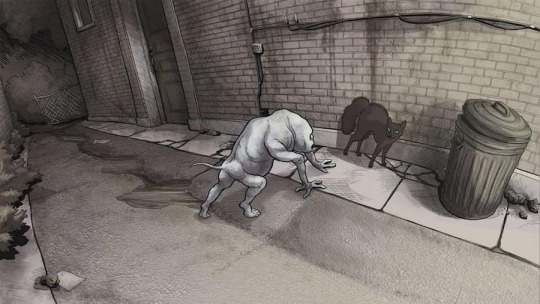

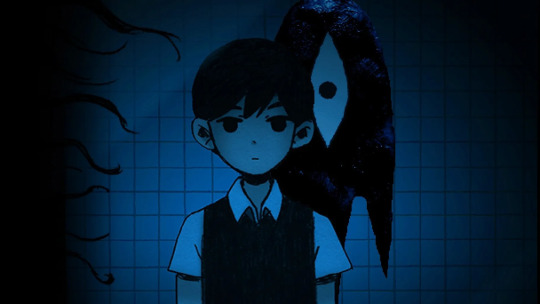

#im normal and fine#sally face#sacred heart liz suburbia#liz suburbia#silver sprocket#scarlet hollow#night in the woods#omori#sal fisher
242 notes
·
View notes
Text
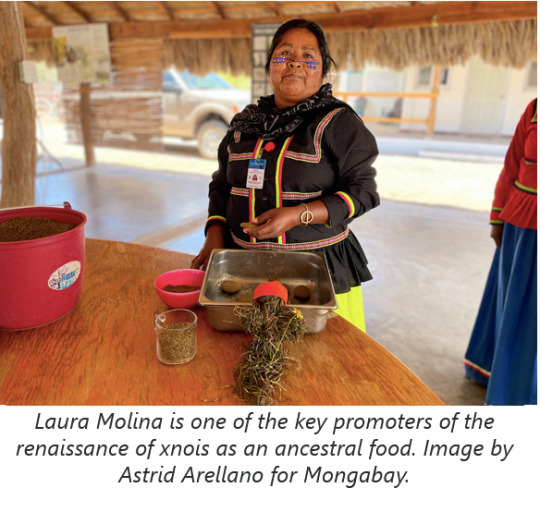



“He was the messenger of a great spirit,” says René Montaño, a Comcaac linguist. [...] Montaño is addressing the entire community at a cultural festival in the Comcaac territory in what is today northwestern Mexico. He talks about how their ancestors learned that xnois (Zostera marina), a type of seagrass also known as eelgrass, could feed their people.
“Zostera marina is paramount for us,” Montaño says. “There are other parts of the world where it barely exists, but here, in this channel, there’s plenty. [...]”
Comcaac [...] fishers learned that it was a food that would give them the necessary strength to survive long ways at sea, and the different ways it could be prepared were passed down from generation to generation. In the past few decades, this knowledge has been largely neglected. Today, the Comcaac people are breathing new life into it.
Comcaac environmentalists Alberto Mellado and Erika Barnett [...] have been developing a study since 2020 [...]. The Infiernillo Channel, located between the Sonora coast and Tiburón Island -- the largest island in Mexico and a sacred site for the Comcaac people -- is a Ramsar site, meaning it’s a wetland of key global importance. It features seagrass meadows, mangrove estuaries, and small patches of coral reefs where various marine species feed. [...] The channel is also home to 81 species of invertebrates endemic to the Gulf of California, and various threatened species, like totoabas (Totoaba macdonaldi) and sea turtles. [...]



In early 2022, as part of this initiative, the team created an event that brought together chefs and biologists from Sonora, the U.S. and Spain who were interested in the culinary uses of xnois and in the conservation of seagrass. There, the Comcaac cooks shared their knowledge about the ancestral ways of preparing xnois: ground by hand to make flour for tortillas or tostadas, or as a drink made with warm water combined with honey [...]. Newer ways of preparing xnois were also on show, such as in energy bars, hotcakes, and bread in combination with wheat flour. [...]
Today, it’s Comcaac [...] like Laura Molina working to promote the benefits of xnois [...]. In a workshop [...], she flattens small dough balls into tortillas and toasts them over a fire. She says the first time she heard about this ancestral food was from her grandmother. Years later, she asked her mother to teach her how to prepare it. [...]
Erika Barnett says her great-grandparents were probably the last ones in the family to harvest eelgrass for the seeds. She says the fact that her father, now 76, can once again eat food prepared with xnois represents a great success. “The last time he’d eaten it, he was 7 years old,” she says. “Most young people have never tasted it, so this effort is really rescuing our culture.” [...] “The guys and my colleagues didn’t know how to prepare xnois, but I’m happy because we’re teaching them and the kids and adults who want to learn,” Molina says. “This is thanks to our ancestors. [...] [T]hey opened the path that led us here.”
---
Headline, images, captions, and text as published by: Astrid Arellano. “Indigenous Comcaac serve up an oceanic grain to preserve seagrass meadows.” Mongabay. Translated by Maria Angeles Salazar. 3 March 2023. [Photos by Asstrid Arellano. This story was reported by Mongabay’s Latam team and first published on their Latam site on 6 June 2022. Some paragraph breaks added by me.]
542 notes
·
View notes
Text
RW Shipping Name Masterlist
F2U Shipping Emotes
Shipping Emote Discord Server Invite
Scug Shipping Tierlist maker
---
Considering the influence I have over the fandom, I will be using this position to create concrete naming proposals for RW Ships.
If there are any suggestions/reworks in mind, please reply to this post! Not all ships will be included but they can be added later by request (and I will intentionally not include problematic/weird ones). On the polyamory side of things, there are so many variations, so I'll just be grabbing some I've seen. (Feel free to suggest any too)
They MIGHT be ordered by popularity/frequency based on my observations (I watch the rain world hashtags on both twitter and tumblr like a hawk; and I also check the fanart discord channels). This isn't me saying that your favorite ship isn't popular or bad.
Ship names are best determined by how well it reads, if it rolls the tongue good enough and how frequent the community uses it. (Alternatively, there can be unique ship codes/descriptors if decided majority by the community)
This list isn't perfect of course, which is why I encourage people to contribute to it! It will be periodically updated.
Please be respectful to each other and be open-minded, especially considering that each of us have widely different portrayals of the characters. The RW Artist community is the most respectful shipping space I ever been on, and I want to keep it that way!
If shipping is not your taste, good for you! Let's respect each others' ideas of how we portray the characters in general.
Let us assume they are all adults in similar age ranges and nonrelated (until proven otherwise by canon) in this case please. For iterators, we will assume all are nonrelated (except Moon and Pebbles as they are heavily coded to be siblings). All shippers ignore the timeline canon the game gives generally.
Plain text means its not yet decided or used by one person
Italicized text means its being decided or used by few people
Bold text means its fully decided or considered by the majority (supported by dedicated hashtags if ever)
SEMI-OUTDATED (doesn't contains all the ship codes so please reply to this post with suggestions)
Contains Downpour spoilers
ARTIFICER SHIPS
Artificer x Hunter - Artihunter/Girls Who Kill/Cherry Bomb/Violent Lesbians/Red Velvet/War Criminals
Artificer x Saint - Artisaint/Death Pop/Argument/Pegasus
Artificer x Gourmand - Artimand/Gourificer/Popcorn/Barbecue/Gore-Bomb/Strawberries n’ Cream/Parentshipping/The Moms
Artificer x Spearmaster - Spearficer/Boomstick/Hotshot/Firecracker/Sparkler/Death Notice
Artificer x Rivulet - Rivuficer/Artilet/Fireboy and Watergirl/Missile/Bathbomb/Rarefacton Cell/Toasterbath
Artificer x Survivor - Survficer/Redvelvet
Artificer x Monk - Artimonk/Sunnysideup
Artificer x Enot - Enotficer/Paprika/La Bomba/Pipe Bomb
GOURMAND SHIPS
Gourmand x Artificer - Artimand/Gourificer/Popcorn/Barbecue/Gore-Bomb/Strawberries n’ Cream/Parentshipping/The Moms
Gourmand x Spearmaster - Spearmand/Kebab/Pin Cushion/Fruit Ninja
Gourmand x Hunter - Gourunter/Huntmand/Honeyham/Cherry Pie/Baby Back Ribs
Gourmand x Saint - Saintmand/Goursaint/Fluffball/Wooly Mammoth/Mintcaramel/Sacred Feast/Shamrock Shake/Ice Cream/Furball/Big Bush/Fat Blunt/Apple Pie
Gourmand x Rivulet - Rivumand/Gourmet/Fastfood/Seafood/Pufferfish/Fish and Chips/Bullfrog
Gourmand x Survivor - Survmand/Gourvivor/Marshmallow/Snowball
Gourmand x Enot - Enotmand/Gournot/Bathbomb/Scrambledeggs/Suspiciousstew/Black Licorice
Gourmand x Monk - Gourmonk/Cheesewheel/Big Cheese
Gourmand x Nightcat - Nightmand/Full Moon
RIVULET SHIPS
Rivulet x Spearmaster - Spearvulet/Fishstick/Swordfish/Speedpaint/Narwhal
Rivulet x Hunter - Rivhunter/Cotton candy/Fisher/Piranha
Rivulet x Artificer - Rivuficer/Artilet/Fireboy and Watergirl/Missile/Bathbomb/Rarefacton Cell/Toasterbath
Rivulet x Saint - Rivusaint/Speedscugs/Floofish/Fluffy Axolotl/Marine Snow/Waterdancers/Bubblefruit/Seaweed/Holy Water
Rivulet x Gourmand - Rivumand/Gourmet/Fastfood/Seafood/Pufferfish/Fish and Chips/Bullfrog
Rivulet x Survivor - Survulet/Tapwater
Rivulet x Enot - Rivunot/Speedrun/Ploink/ADHD/Explosion :3
Rivulet x Monk - Rivmonk/Monkvulet/Lemonshark/Banana Boat
Rivulet x Nightcat - Nightvulet/Deep Sea/Lanternfish
SPEARMASTER SHIPS
Spearmaster x Rivulet - Spearvulet/Fishstick/Swordfish/Speedpaint/Narwhal
Spearmaster x Saint - Spearsaint/Saintmaster/Spearmint/Icicles/Holy Stick/Thornbush
Spearmaster x Gourmand - Spearmand/Kebab/Pin Cushion/Fruit Ninja
Spearmaster x Artificer - Spearficer/Boomstick/Hotshot/Firecracker/Sparkler/Death Notice
Spearmaster x Hunter - Spearhunter/Huntmaster/Love Message/Thorn Bush/Grape Fruit/Grape Juice/Broadcats
Spearmaster x Survivor - Spearvivor/The Fighters/Glowstick
Spearmaster x Enot - Spearnot/Lagspike
Spearmaster x Monk - Spearmonk/Cheesestick
Spearmaster x Nightcat - Spearnight/Nightspear/Shadow Force/Vampire Bat
SAINT SHIPS
Saint x Artificer - Artisaint/Death Pop/Argument/Pegasus
Saint x Spearmaster - Spearsaint/Saintmaster/Spearmint/Icicles/Holy Stick/Thornbush
Saint x Gourmand - Saintmand/Goursaint/Fluffball/Wooly Mammoth/Mintcaramel/Sacred Feast/Shamrock Shake/Ice Cream/Furball/Big Bush/Fat Blunt/Apple Pie
Saint x Rivulet - Rivusaint/Speedscugs/Floofish/Fluffy Axolotl/Marine Snow/Waterdancers/Bubblefruit/Seaweed/Holy Water
Saint x Hunter - Saintunter/Cherrybush/Watermelon
Saint x Survivor - Survaint/Toothpaste/Mint Ice cream/Pistachio
Saint x Enot - Saintnot/Chaos/Godmode
Saint x Monk - Saintmonk/Monsaint/Peacemakers/Banana Split/Sprite Lemon Lime
Saint x Nightcat - Nightsaint/Holy Night/Nightshade/Chocolate Mint
HUNTER SHIPS
Hunter x Artificer - Artihunter/Girls Who Kill/Cherry Bomb/Violent Lesbians/Red Velvet/War Criminals
Hunter x Rivulet - Rivhunter/Cotton candy/Fisher/Piranha
Hunter x Gourmand - Gourunter/Huntmand/Honeyham/Cherry Pie/Baby Back Ribs
Hunter x Saint - Saintunter/Cherrybush/Watermelon
Hunter x Survivor - Survunter/Hunter Gatherer/Candy Cane
Hunter x Spearmaster - Spearhunter/Huntmaster/Love Message/Thorn Bush/Grape Fruit/Grape Juice/Broadcats
Hunter x Monk - Huntmonk/Monkhunter/Apple Juice
Hunter x Nightcat - Nighthunter/Bloodmoon
Hunter x Enot - Huntnot/Counterstrike/Hard Boiled
SURVIVOR SHIPS
Survivor x Gourmand - Survmand/Gourvivor/Marshmallow/Snowball
Survivor x Artificer - Survficer/Redvelvet
Survivor x Rivulet - Survulet/Tapwater
Survivor x Spearmaster - Spearvivor/The Fighters/Glowstick
Survivor x Hunter - Survunter/Hunter Gatherer/Candy Cane
Survivor x Saint - Survaint/Toothpaste/Mint Ice cream/Pistachio
Survivor x Nightcat - Nightlight/Oreo/Yin and Yang/Nightvivor/Survnight/Zebra Cake/Riceball/Onigiri/Starrynight
Survivor x Enot -Survivenot/Reversal
MONK SHIPS
Monk x Hunter - Huntmonk/Monkhunter/Apple Juice
Monk x Nightcat - Nightmonk/Solar Eclipse/Moon Cheese
Monk x Rivulet - Rivmonk/Monkvulet/Lemonshark/Banana Boat
Monk x Spearmaster - Spearmonk/Cheesestick
Monk x Artificer - Artimonk/Sunnysideup
Monk x Gourmand - Gourmonk/Cheesewheel/Big Cheese
Monk x Saint - Saintmonk/Monsaint/Peacemakers/Banana Split/Sprite Lemon Lime
Monk x Enot - Monknot/NachoCheese
NIGHTCAT SHIPS
Nightcat x Survivor - Nightlight/Oreo/Yin and Yang/Nightvivor/Survnight/Zebra Cake/Riceball/Onigiri/Starrynight
Nightcat x Enot - Enight/Enotnight/Nightnot/Error 404/Black Cats
Nightcat x Monk - Nightmonk/Solar Eclipse/Moon Cheese/Midnight Sun
Nightcat x Gourmand - Nightmand/Full Moon
Nightcat x Saint - Nightsaint/Holy Night/Nightshade/Chocolate Mint
Nightcat x Rivulet - Nightvulet/Deep Sea/Lanternfish
Nightcat x Artificer - Nightficer/Artinight/Fireworks
Nightcat x Hunter - Nighthunter/Bloodmoon
Nightcat x Spearmaster - Spearnight/Nightspear/Shadow Force/Vampire Bat
ENOT SHIPS
Enot x Artificer - Enotficer/Paprika/La Bomba/Pipe Bomb
Enot x Gourmand - Enotmand/Gournot/Bathbomb/Scrambledeggs/Suspiciousstew/Black Licorice
Enot x Rivulet - Rivunot/Speedrun/Ploink/ADHD/Explosion :3
Enot x Spearmaster - Spearnot/Lagspike
Enot x Saint - Saintnot/Chaos/Godmode
Enot x Hunter - Huntnot/Counterstrike/Hard Boiled
Enot x Survivor - Survivenot/Reversal
Enot x Nightcat - Enight/Enotnight/Nightnot/Error 404/Black Cats
Enot x Monk - Monknot/NachoCheese/Moon Cheese/Midnight Sun
ITERATOR SHIPS
Pebbles x Suns - Redpebbles/Sunstone/Hot Rocks/Fallen Suns/ Fallen Sunset/Pepper Volcano/FPS
Pebbles x Sigs - Sigpebbles/Ragequit/Gamer Rage/Rock and a Hard Place/Synthesizer
Suns x Sigs - Sunsigs/Traffic Light/Therapy Session
Suns x Moon - Sunmoon/Eclipse
Sigs x Moon - Sigmoon/Lilypad/Neuron Spam
Moon x Sliver - Slivermoon/WaningCrescent/Fallen Gods/Harvest Moon
Sliver x Wind - Sliverwind/Windy Fields
Wind x Innocence - Windocence/Content Warning User Interface
Pebbles x Suns x Sigs - Sigsunpebs/Cold Ones
MISC. PAIR SHIPS
Artificer x Scavenger Chieftain - Artiking/Regicide
Artificer x Hunter x Rot - Artrothunter/Explosive Hunting
Survivor and Monk's Parents - Mayo Ketchup/Salsa Rosa
Artificer x Hunter x Scavenger Chieftain - Artihunterking/Triple Threat/Triple Red
Robin x Carl - Corbin
MULTI-SHIPS (3)
Artificer x Saint x Hunter - Artisaintunter/Spicy Pesto/Tri-Force/Cyberbullying
Artificer x Hunter x Spearmaster - Artispearunter/Girls Night/Murdercat Trio/Murdercats
Artificer x Hunter x Gourmand - Artihuntermand/Heartwarm/Homebound/Sunrise
Saint x Rivulet x Gourmand - Saigourmulet/Seasoned Fish Fillet/Ice Cream
Artificer x Rivulet x Saint - Artisaintvulet
Survivor x Gourmand x Spearmaster - Gourvivaster/PB&J
Spearmaster x Rivulet x Saint - Spearsaintvulet/Crazy Straw
Artificer x Saint x Spearmaster - Artispearsaint/Dangocats
Hunter x Survivor x Nightcat - Survnightunter/Neapolitan
Artificer x Spearmaster x Rivulet - Artispearvulet/Ultrakill
Rivulet x Hunter x Monk - Rivuntermonk/Sonic Heroes/Red Waters
Saint x Hunter x Rivulet - Saintuntervulet/RGB
Hunter x Rivulet x Spearmaster - Huntvuletmaster/Pufferfish
Rivulet x Spearmaster x Gourmand - Rivmastermand/Fish Kebab/Luau/Seafood Kebab
Spearmaster x Artificer x Gourmand - Spearficermand/Spitroast
Saint x Gourmand x Enot - Goursaintnot/Fluffy Ball of Chaos/Digital Yarn Ball/G Fuel/Choking Hazard/Mountain Dew/Divine Dining
Survivor x Enot x Nightcat - Survnightnot/Oreo Sunday/Lightswitch (System related)/Monochrome
Saint x Enot x Nightcat - Saintnotcat/Cheats Enabled/Glitched Cycles/Ascended cycles/Repeating Fates/Starry Mint
Spearmaster x Hunter x Monk - Spearuntermonk/Juice Box/Apple Cider
Rivulet x Saint x Gourmand - Rivusaintmand/Surf n Turf
MULTI-SHIPS (4)
Artificer x Saint x Hunter x Spearmaster - Artispearaintunter
Artificer x Hunter x Spearmaster x Rivulet - Artispearuntervulet
Gourmand x Spearmaster x Saint x Rivulet - Goursaintmastervulet/Sushi/Popsicle
Gourmand x Spearmaster x Rivulet x Hunter - Gourspearvuletunter/Fish Fry
MULTI-SHIPS (5)
Artificer x Saint x Hunter x Spearmaster x Nightcat - Artispearaintnightunter
Artificer x Saint x Spearmaster x Rivulet x Gourmand - Artispearaintvuletmand/Speartigourmrivsaint/DP Gang
Artificer x Hunter x Spearmaster x Rivulet x Saint - Artispearaintvulenter/War Crimes
MULTI-SHIPS (6)
Artificer x Saint x Spearmaster x Rivulet x Gourmand x Hunter - Artispearaintunervuletmand/Rainbow/Tie-dye
MULTI-SHIPS (7)
Artificer x Saint x Spearmaster x Rivulet x Gourmand x Hunter x Enot - Artispearaintunternotvuletmand
Artificer x Saint x Spearmaster x Rivulet x Gourmand x Hunter x Nightcat - Artispearaintunternightvuletmand
MULTI-SHIPS (8)
Artificer x Saint x Spearmaster x Rivulet x Gourmand x Hunter x Nightcat x Enot - Artispearaintunternightvuletnotmand (phew... *accidentally summons satan* FUCK.)
#scug shipping#rain world#rainworld#rain world downpour#rainworld downpour#rainworld spoilers#rain world spoilers#dp spoilers#text#slugcat#iterator
408 notes
·
View notes
Note
have you perhaps a list of readings you would recommend to understand better disco elysium/sacred and terrible air? i wouldn't know where to start and your posts are interesting so worth trying to ask :)
aw thank you! Well, I feel like I’m not really that well-read, and the order I read philosophy/history/etc is all over the place lol
If I had to recommend some reading, there is this essay about the pale, that I think is essential to understanding Elysium. :
https://ghelgheli.substack.com/p/introductory-entroponetics
as for books, I would say Capitalist Realism by Mark Fisher could be a good starting point. And I think it would be worth to read something about these topics:
neoliberalism, capitalism
communism - marxism, history of socialist countries
russian nihilism
christianity - dispensationalism
The devs have said that they were influenced by Hegel, Marx, Slavoj Žižek, Lenin, & they also said they used to be anarchists so I would say reading some anarchist text could be interesting too if you want to really dive into it (idk, Emma Goldmann for example)
You can find a lot of these writings on these websites:
https://www.marxists.org/
https://theanarchistlibrary.org
#I’m going to admit that a lot of my knowledge comes from articles youtube videos and podcasts about marxism. i have not read Capital#it was like. i learned some basic philosophy at uni and then i read whatever i found interesting at the moment#i feel like when reading (political) philosophy it's best to start with something that you think is interesting rather than trying to#go chronologically thought the most important philosophers like you would in school#so like i read mark fisher and because it was interesting then i read about marx's theories and then i looked into hegel more etc#or reading about hegel before actually reading hegel's writings#thats all i have cause im trying to recommend things that are actually linked to de instead of philosophers i personally agree with#(im not a big fan of zizek)#+ anything can be on an elysium reading list if you are obsessed enough lol i was reading postmodernists too for this reason
54 notes
·
View notes
Text
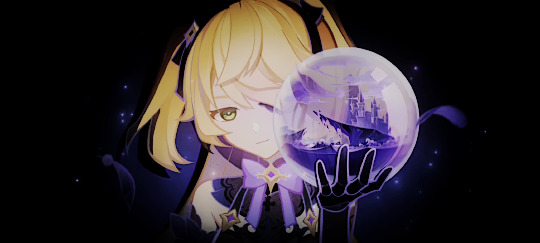
Unraveling Princess Fischl
So I recently finished studying Princess Fischl in a lab and the results I got were kinda crazy.
As a disclaimer, I do this just for fun. I like connecting dots and solving puzzles. But I'd rather you draw your own conclusions. In this post I will try to dissect the mysteries surrounding the Prinzessin. And you really can't talk about Fischl without including Kaeya. I've even got a surprise guest star for you.
WARNING: this post is VERY long, click on that Read More at your own risk, otherwise you'll be stuck scrolling forever.
For simplicity's sake Princess Fischl will be referred to as Fischl while playable Fischl will be demoted to F.
PART 1: MIDSUMMMER NIGHT'S DREAM
Most of this will use the books Legend of the Shattered Halberd and Flowers for Princess Fischl as a source. These books are authored by someone named Mr. Nine. The books are published by Yae Publishing House. So keep in mind there's a non-zero percent chance Mr. Nine is actually just a certain Nine-Tailed Fox.
F's alternate outfit is called Immernachtstraum. This is a reference to Shakespeare's play Midsummer Night's Dream. In German the play is called Ein Sommernachtstraum. So you can see the similarities (Immernachtstraum means Eternal Night's Dream.)
Kaeya is in part based on the Indian changeling prince from the same play. The character Oberon, the Fairy King, is the french derivative of Alberich. The play itself is basically about people getting into Shenanigans so absurd it might as well be a dream. Oberon and his wife Titania are actually key players in quite a bit of different media… But as much as I want to delve into that, this isn't a Kaeya post.
Just remember for now that Titania is the Fairy Queen.
In the book Flowers for Princess Fischl, there is a mention of a Sommernachtgarten. It is described as a Domain possessed by someone highly skilled in the magical arts. Sommernachtgarten seems to have existed in Teyvat. The domain Midsummer Courtyard, which has the Thundering Fury set, tells us the Sommernachtgarten was buried underground.
The domain is located in Starfell Valley. It's nearby Starfell Lake and Starsnatch Cliff. Starfell Lake is said to have been formed by a fallen star.
Fischl is also equated to a star that fell down. Notably, in F's birthday letters, and in Legend of the Shattered Halberd.
Birthday Letter: Day of Destiny…
On the day of a sacred star's descent from the depths of the night sky into this realm, I, the Prinzessin der Verurteilung, have asked Oz to cross the ocean and bring, me exotic treasure.
LotSH Vol. 1
The story was that an iron meteorite had fallen from the sky five or six years ago, and convention dictated that as nature's treasure it belonged to the imperial family.


Starsnatch Cliff is the only place where Cecilia flowers grow. These flowers have a triquetra shape, which is similar to Kaeya's passive talent Glacial Heart. Kaeya has been featured with these flowers in his birthday arts, and even invites the Traveler to go see the flowers with him.
Alice: With enough bombs placed in proper positions, even huge cliffs like Starsnatch would crumble into dust in a second. With flatter terrain, Mondstadt would surely look much nicer. But that unctuous Cavalry Captain rejected my proposal instantly. He even asked me to stay away from Starsnatch Cliff.
Furthermore, when Alice proposed to blow Starsnatch Cliff up, Kaeya denied her request and warned her to never go near there again… Starsnatch Cliff also overlooks the Nameless Island which is shrouded in mist and invisible on the map.
菲谢尔 = Fischer = Fischl
Fischl's name might be a reference to the Fisher King from Arthurian legends. One name of the Fisher King is Amfortas. In the game Anfortas is the name of the Knight Marshal of the Schwanenritter; he's thee Alberich who stepped up as Regent King when Irmin was indisposed.
Perhaps Fischl was the original "Fisher King" and the kings who came after her, like Irmin and Anfortas, fulfilled her role. …But this would imply Fischl was once the ruler of Khaenri'ah. That would be crazy, right? Right, guys?
PART 2: THE PRINCESS OF JUDGEMENT
When I was analyzing the 8-pointed star, I discovered these 8 points could actually correspond to the Guardians of the Eight Directions in Hinduism.
For some reason, ascension gem stones are named after Hindu gods (with the exception of Electro). This isn't the case in the original Chinese naming however.
Still, I tried to mix and match the gemstones to a direction.


North: Kubera, The God of Fortune -> GEO
South: Yama, The God of Justice and Death -> ???
East: Indra, The Lord of Heaven and God of the Weather, Sky, Rain, and Storms -> ELECTRO
West: Varuna, God of the Seas, Oceans, and Rain -> HYDRO
Northeast: Ishana, God of Birth, Death, Resurrection, and Time -> DENDRO
Southeast: Agni, God of Fire -> PYRO
Northwest: Vayu, God of the Winds and Air -> ANEMO
Southwest: Nirṛta, God of Death, Sorrow, and Decay -> CRYO
Hydro (Varunada), Pyro (Agnidus) and Anemo (Vayuda) gems already have the same names as the Hindu gods so that was easy. The Electro gemstone Vajrada is named after a sword but it belongs to Indra, God of Weather, Rain and Storms.
That just left me with Cryo (Shivada), Geo (Prithiva) and Dendro (Nagadus). Ishana is the God of Birth, so I'll assign him Dendro. Kubera is the God of Fortune which is Geo because Mora.
Now Cryo is a bit puzzling, because it's named after Shiva, who in Java and Bali Hinduism is actually the direction in the center. Some crazy implications here for our buddy the Tsaritsa because Shiva is the God of Destruction within the Trimurti, a trinity of deities. The other two are Brahma, God of Creation and Vishnu, God of Preservation.
In Java Hinduism, Brahma and Vishnu would correspond to the directions Zenith (South) and Nadir (North). Whether this is hinting at something about the nature of the Tsaritsa is unclear. When you see Three Deities you think Moon Sisters, right? However, we can't rule out the possibility that Genshin decided to mix these deities up. Let's just spare ourselves the headache for now and forget about this. This is a Fischl analysis after all.
So instead, let's have a look at the Cryo gemstone's original name in Chinese. The stone is simply called Grieving Ice.
哀叙冰玉: Grieving Ice
Since Nirriti is the God of Sorrow, I decided to assign them Cryo. Now we are left with one deity, Yama: The God of Justice and Death. Well, it can't be Hydro, because we already assigned them to a God. So it has to be someone else.
Fischl's title is the Prinzessin der Verurteilung. Which translates into Princess of Judgement. According to Legend of the Shattered Halberd and F's voicelines, Fischl's role was to act as a judge.
More About Fischl: I
To condemn the guilty, to sanctify the just, and to draw all castaway dreams into the embrace of the infinite Immernachtreich. This is the birthright of the Prinzessin der Verurteilung, and her burden. None may gainsay it.
What's interesting is that Fischl uses magical arrows to shoot down the "enemies of fate".
About Us: Shooting Down the World Beast
Should this world, like a beast prowling in the night, covet your dreams, then I, Prinzessin der Verurteilung, shall fell it with my ensorcelled arrows of judgment!
Feelings About Ascension: Intro
My magic arrow cries out my holy name as it streaks through the night, praying that the violet lightning of retribution shall strike the enemies of fate down from the skies!
On the 8-pointed star, there's an arrow pointing upwards. Kaeya, Clothar and Halfdan's stars on their outfits and even F herself have the arrow pointing downwards.
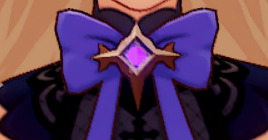

The achievement you get when you find this door is called "Abandon All Hope Ye Who Enter Here". Which is a reference to the entrance to Hell in Dante's Inferno.
The Immernachtreich is described as a place where all things will eventually flow into. Immernachtreich literally translates into Eternal Night Realm…
Flowers for Princess Fischl: Phantasmagoria
Every good, bright and noble thing must eventually fall to inexorable entropic destruction, and the final destination of the universe is the realm-in-waiting of the Prinzessin, Immernachtreich. This is the fate of all worlds, of the universe, and all who live in it.
In the Immernachtreich Apokalypse, Leon calls Fischl the Soteria.
Soteria means salvation, preservation. It's used as an epithet for Persephone and Hecate. Persephone was forcibly made Queen of the Underworld, and Hecate is also known as the Goddess of the Underworld and Witchcraft…
Look, I don't want to claim Fischl was the secret 8th Archon or anything, because lest we forget Khaenri'ah was a godless nation who would've been Fischl's enemies. But why then would Khaenri'ah have this giant star referencing the 8 deities as their emblem in the first place? Seems a bit counterintuitive. I don't have the answers for now, and perhaps the 8th "archon" was simply Irmin. Or maybe it's not even representing a god but an element or a direction.
Regarding Oz, he is a not so subtle reference to Odin/Irmin but is also a reference to the Wizard of Oz. In the first book, it was revealed this wizard was literally just some guy pretending to be powerful. Eventually Oz starts working as an advisor for the true ruler of Oz, Princess Ozma, who is the inspiration behind Fischl. We'll get back to that later.
This Oz's full name is Oscar Zoroaster Phadrig Isaac Norman Henkle Emmannuel Ambroise Diggs. OZ is actually short for Oscar Zoroaster. Zoroaster is referenced in Flowers for Princess Fischl.
In a distant causality, if the philosopher Zarathustra was not chosen, then the opera writer would have gained victory in the contest over the will of the world.
This does make you wonder if Irmin really was the true ruler of Khaenri'ah and if he even existed the way we believe he did. Perhaps Fischl got Irminsnapped and now everyone believes Irmin was always the One-Eyed King.
Of course this is all my personal speculation and I could be way off here.
Wait, before we move on to next section, I want to point out something that always gets ignored:

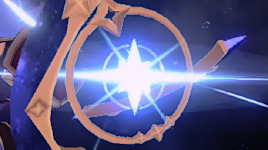
Kaeya and Mona, when they cast their bursts, summon the same 8-pointed star. This is unique to them alone. Could there be a connection between Khaenri'ah and witchcraft? Or is either Kaeya or Mona an outlier?
PART 3: HEXENZIRKEL
In the trailer Mage's Teaparty, there are eight witches shown. However, we only know the names of six witches, and there is a chair missing at the table.
There is a slideshow where the figures of the eight witches are shown, minus Andersdottir who is represented by the book The Boar Princess.
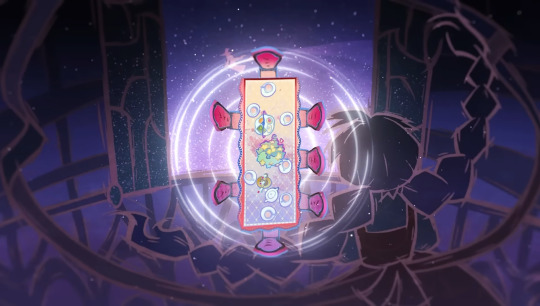
Observe the witch on the broom and the little witch. The design of the little witch is similar to the design of a famous fictional character who got pulled into another world: Dorothy Gale from The Wizard of Oz books.
Dorothy is illustrated as having twin tails and wearing a farm girl dress. Dorothy's character was influenced by the character Alice, from the Wonderland books.
Originally I assumed Alice Genshin might be based on book Alice. However, it's the Narzissenkreuz quest that's based on the Wonderland books and Mary-Ann who takes the role of Alice.
With that in mind, could Alice Genshin actually be more of a Dorothy inspired character instead?
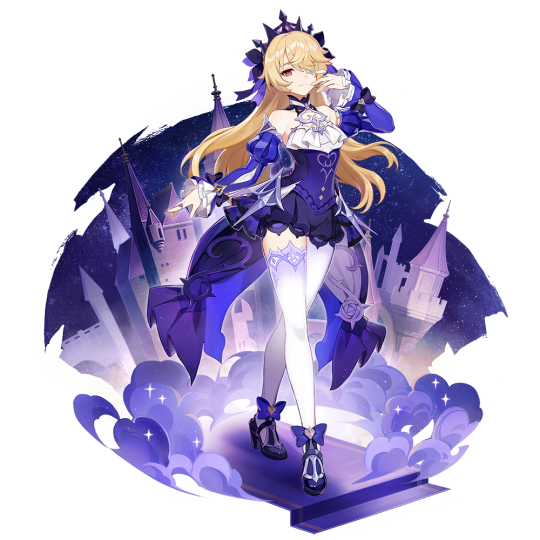

Now, Dorothy had a very good friend, called Princess Ozma. Ozma seems to be the inspiration behind Fischl.
So who is Ozma? I only have the Wiki to go on because I'm not about to read 40 books, but by the sound of it, Ozma is the current ruler of the realm of Oz. She is the daughter of a human king and a Fairy Queen. Her mother Lurline was the one who created Oz and turned it into a Fairy country.
Ozma took it one step further and separated Oz entirely from the outer realms making it invisible to outsiders. Everyone who enters Oz never ages.
If you're an F main I'm sure you know by now Fischl created another universe and founded paradise.

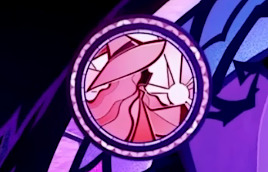
Now I want you to take a look at the witches portrayed in these circles. There are two witches holding a sphere. In F's cutscene from the Summertime Odyssey event, she is also holding a sphere which contains the Immernachtreich which you can see in the header image of this post and below.
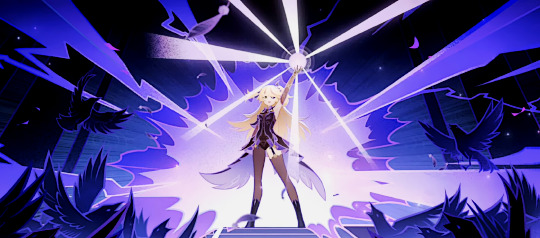
You might think a glowing sphere represents a crystal ball to scry in, but that poses a problem since known prophet Barbeloth is probably represented by the witch holding a waterdrop, which is Hydromancy. So the glowing sphere might not necessarily mean a prophetess.
As for the identity of the other witch with the globe, I believe this could be Alice, since she was the one who created the domain/dreamscape of the Veluriyam Mirage. It could also be Rhinedottir who is creating something in a flask.
So Orb = Domain/Realm/Creation
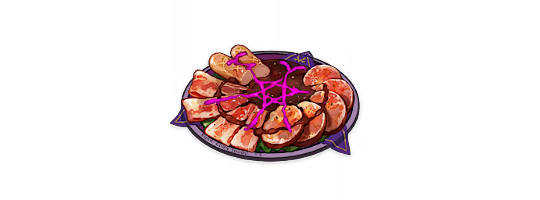
Furthermore F's specialty food is Die Heilige Sinfonie, which has a Magic Hexagram painted on top… (Die Heilige Sinfonie translates into The Holy Symphony.) As mentioned before, the Sommernachtgarten could only be created by someone with great magical powers…
Magic Circles is Ceremonial or Arcane Magic, and according to a note left by Master Ruggiero in Bravais' study, Arcane Arts originated from a pre-Remurian civilization.
So someone must have taught humans magic. Might sound obvious, but it begs the question of WHO?
PART 4: FREYJA
To answer this question we need to dip our toes into Norse mythology. As you know, Odin is Irmin.
There was a war between two groups of gods: the Aesir and the Vanir.
Eventually they had enough and decided to exchange hostages as a peace offering. The goddess Freyja, originally part of the Vanir, joined the Aesir which would be Odin's group. As a sacrificial priestess, she was the one who taught the Aesir dark magic, which included seeing into the future. The implication here then is that Odin was taught black magic by Freyja.
This magic is known as seiðr. Seiðr is derived from *soi-to- which means rope/string. The distaff, a tool used for spinning wool, is associated with dark magic. There are images of women riding distaffs as a broom, similar to a witch riding a broomstick. To quote the Wiki: "In any case, the string relates to the "threads of fate", that the Nornir spin, measure, and cut. " Wait, that sounds familiar:
F, joining the party voice line: The threads of your fate lie in my hands!
Scholars suspect Freyja is the same person as Gullveig who was involved in the Aesir-Vanir war. Gullveig was attacked by the Aesir with spears; she died and was reborn three times. When Fischl tried to visit the Kingdom of Eternal Twilight she was also attacked by its people and "shed her blood on the sacred emblem" whatever that means. It was Oz who saved her, pledging his loyalty to her.
Freyja sometimes is conflated with another goddess named Frigg. There has been much debate whether or not these two goddesses stem from the same deity. Frigg is part of the Aesir and usually Odin's wife.
I mention this because in the book Hex and Hound, one of the characters is named after Frigg: Nottfrigga. This book is about two twin witches sharing the same body. In the book we find out that they were the daughters of a powerful witch, but witches are unable to keep more than one offspring of the same generation. This led to Nottfrigga's twin sister Magdalene eventually dying, and her using magic to sustain her sister inside a magic bracelet.
In Norse mythology, Nott is the personification of night. Nott's father is named Narfi. This really got my attention, because Fischl's full name is Fischl von Luftschloss Narfidort. (Fischl of the Castle in the Sky Narfidort.)
In the Hexenzirkel teaser, every witch is represented by a teacup (or in the case of Andersdottir, an inkbottle) but the saucer next to Nicole's teacup is empty. Since this saucer belongs to the same teaset this could mean one of the missing witches is Nicole's twin sister or a relative.
So what could Fischl's role be in all this? Perhaps she's one of the twin sisters, or their mother. Perhaps she's even an ancestor. ...Or completely unrelated to them and I'm full of shit.
PART 5: THE HARBINGERS
F's theme shares a leitmotief with the Fatui Harbingers theme.
F's theme: Sieh an, mein Sommernachtgarten!
Signora's theme: Saltatio Favillae
Obviously this means Fischl is Capitano.
Composers don't do these things by accident. This is hinting at something. Either Fischl is connected to the Harbingers, was/is one of the Harbingers, or she is indeed the Tsaritsa.
Which is not as crazy as it sounds.
In Legend of the Shattered Halberd, Fischl possessed someone else's body. And if she is Freyja's equivalent, who died three times, then it's possible she could've been reborn as someone else. In the book, it was Mir who summoned Fischl into Weiyang's body and sacrificed his eye to appease her. Pierro is working for the Tsaritsa and has his right eye covered for reasons unknown. Having been a royal mage who would have had access to Khaenri'ah's restricted library, perhaps it was Pierro who summoned Fischl into the Tsaritsa's body.
The Tsaritsa is collecting the seven Gnoses, Fischl had to collect seven of the nine Ominous Swords to repair the Divine Halberd, which would be herself. She already had two of them in her possession… Could also be that the Tsaritsa is trying to revive her. This would imply Fischl is the Third Descender. Since she came from another world, this is not impossible.
The Fisher King, Fischl's possible namesake, was struck with a wound that could only be healed by a "pure fool" who would ask him the right question. ...Fatui is Latin for fools. If the Tsaritsa really is/is possessed by Fischl, then creating an organization of fools starts to make sense: the fools are her saviors.
This could also connect to the empty 10th seat within the Harbingers. The vacant spot could be a reference to the Siege Perilous, which was an empty seat reserved for the one successful in obtaining the Holy Grail by way of saving the Fisher King.
Usually this is accomplished by Percival, who later finds out his mother is the sister of the Fisher King. In the story, Percival keeps failing to return to the kingdom of the Holy Grail since it is an otherworldly place. Does that not remind you of Kaeya trying to find Khaenri'ah but failing halfway through?
Going back to Princess Ozma, an evil witch cast a spell on her that turned her into a little boy named Tippetarius. This was done to prevent Ozma from ascending to the throne. Tip was unaware of his true identity until he was transformed back into Ozma.
tippet /tĭp′ĭt/ noun
A covering for the shoulders, as of fur, with long ends that hang in front.
As noted in The Marvelous Land of Oz, Chapter 23, Tip has brown colored skin.
…Kaeya, blink twice if you need help.
As a staunch hater of things that don't make sense, I highly doubt this means Kaeya is Fischl; the game would never go there. Perhaps being "Fischl" is simply hinting towards the fact that he will become one of the Fisher Kings.

That would certainly explain this random hangout ending.
Now, here's where things get really crazy.
Remember Anfortas? The Knight Marshal of the Schwanenritter who took over as regent after Irmin became indisposed? At the time of writing, Anfortas's fate remains unknown.
As said before, Anfortas is the name of the Fisher King in Arthurian legends. Fischl's name might've been a nod to that.
But it gets weirder.
T.S. Eliot's poem The Waste Land combines Arthurian legends with the legend of the Fisher King. In it, he associates the Fisher King with the tarot card Three of Staves.
The Man with Three Staves (an authentic member of the Tarot pack) I associate, quite arbitrarily, with the Fisher King himself.
…We have seen this symbol somewhere before. On the constellation wheel of the Fatui Harbingers. By process of elimination this constellation belongs to Il Capitano.
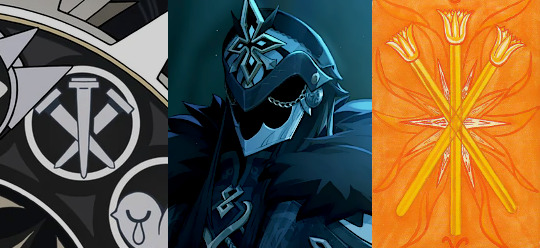
👏🏽👏🏽CONGRATULATIONS CAPITANO YOU ARE KAEYA'S NEXT TOP GRANDPA 🎉
Kidding of course, but I doubt this is a coincidence. This doesn't necessarily mean they are the same person, maybe Capitano simply mindmelded with Anfortas. It's a fantasy game, everything is possible at this point.
Wait a minute… three nails, three deaths… Uhhh maybe Fischl really did turn into Capitano.
👏🏽👏🏽CONGRATULATIONS CAPITANO YOU ARE PRINCESS DIANA'S NEXT REINCARNATION 👸🏼
PART 6: THE THIEF AND THE MAGE
Alright, for this section I want us to keep in mind the following things:
Fischl is a fallen star
Fischl may have been a mage
Fischl could be connected to Irmin and thus Khaenri'ah

The play of the Veluriyam Mirage is written by Zosimos. This play stars Kaeya as a Thief, Klee as a Mage and Idyia as a last minute heroine added to the story.
You see, Zosimos originally wanted to write a story based on rumors he'd heard about a thief and a mage. This means the play might not be entirely fictional. The problem is that Zosimos combined Idyia's backstory with the story of the Thief and the Mage, making it hard to tell which bits belong to Thief's story.
We know at least that Alice was the mage who helped Idyia. But what about the Mage who helped the Thief? Who was she? Could it have been Alice or someone else?
For that we need to consider the character Kaeya was playing. It's unknown who he is, but if Klee was playing her mom then it stands to reason Kaeya must've been playing someone connected to him. Before you get excited, this does not necessarily mean someone related to him by blood. Could also just be someone from Khaenri'ah. Heck, we don't even know the gender of the mage, for all we know they could've been a man.
Now, the soundtrack that plays during Kaeya's part is called Towers of Afrasiab. This name has come up before. In the play of Kaeya's hangout, the character he plays opposite of is called Frasiyav. The location of the Khaenri'ahn door is called Hangeh Afrasiyab.

I personally suspect Afrasiyab is either Irmin or the founder of Khaenri'ah.
Afrasiyab is a character from the Persian epic, the Shahnameh. Afrasiyab lived in an underground iron palace held up by hundreds of columns. (If you look at the architecture in Hangeh Afrasiyab, you'll see little reliefs of men holding up a ceiling above them.) Afrasiyab lacked the divine royal glory known as Khvarena and was obsessed with obtaining it. In the play they say Frasiyav lost because he lacked the blessing of god…
I mean it can't get any more obvious than that. So this could mean the dude from Kaeya's hangout was Irmin. Which does raise a bunch of questions, such as who is the identity of the Prince in this play? And why were they at war?
Should be noted in the hangout's play, Frasiyav offered hostages as a peace offering. Kind of reminds me of the war between the Aesir and Vanir… Also, Kaeya's character Prince Qubad is based on Siyavash who eventually married into Afrasiyab's family…
Towers of Afrasiyab then could refer to Khaenri'ah. In the Veluriyam play, the Thief is also from a dark realm. I hesitate making the assumption that this guy is Irmin or Kaeya's pirate grandpa so I will refer to him as simply the Thief.
In the play, the Thief witnesses a shooting star falling from the sky and follows it. However, what he finds is not a star but a young woman. Well, we know Fischl was also a star that fell down. And we know Fischl visited the Kingdom of Eternal Twilight and got bodied for her efforts. Oz took her under his wings and saved her life.
If the Thief encountered the Mage this way it would explain why the Mage helped him as a way to repay him. Perhaps the Mage taught him Arcane arts or helped him protect the "Dark Realm", who knows?
If this Mage really was Fischl and the Thief someone connected or related to Kaeya it would explain why Fischl and Kaeya seem to be connected.

About Kaeya
F: His nature is obscure, his fate a mystery, and his speech a vexing tapestry woven of both fact and fiction… Perhaps he and I share the burden of mystical sight…
About Fischl
Kaeya: Hmm? You think Fischl having one eye covered is very fitting given her title of Prinzessin der Verurteilung. Hahaha, if that's the case, that must also make me a descendant of some kind of former royal lineage, no?
Furthermore, in Legend of the Shattered Halberd, Fischl's partner in crime, the man who summoned her, is named Mir. This is a reference to Mimir, the severed head from Norse mythology who acted as an advisor to Odin.
Mr. Nine states Fischl was attracted to Mir… and that Oz was more of a familiar of Fischl.
In Wagner's opera Der Ring des Nibelungen, Mimir is known as Mime, the brother of Alberich.
....😮💨
Well, I have to say, even after all of that, I am completely stumped. If anyone knows what's going on, let me know, because I for one would love to know WHAT'S GOING ON FOR ONCE. GIVE IT UP FOR KNOWING WHAT'S GOING ON
40 notes
·
View notes
Text
Something that always sits in the back of my mind is Mark Fisher’s suicide. I really look up to Mark Fisher (author of Capitalist Realism and K Punk blogger and so on) and relate to him to the point of feeling like a strong spiritual kinship, alignment, in the sense of “my first person experience of this world probably resembled his first person experience of this world in a significant way, probably more significant of a resemblance than my sentience is to the sentience of even the people closest to me”. Maybe with the hero worship I engage in in mythologizing the idea of “first person experience of this world” too much, because I can’t really justify why I would feel like my consciousness resembles a dead English philosopher and professor more than it would to people physically proximite to me I kind of shove aside as ‘unrelatable’ even though their day to day life resembles my own. But I can live basically the identical day as a classmate at my college and under identical conditions and I don’t feel like that has any bearing on the resemblence of our inner, first person experiences. I feel like the filters of their cognition and mine have nothing in common. And maybe it’s easier with strangers. And my cognitive identification with Mark Fisher or Kafka or Daniel Johnston or David Tibet or who ever da fuck is no more sacred or inspired than someone I would think is a complete fool for their parasocial relationship identification with Taylor Swift or Hozier or something. But to the point I feel connected to Mark Fisher in a way that the fact that he killed himself really bothers me because I think he was correct in the way he viewed the world, and in his clarity he chose to exit it, and I really don’t know why I ought not to do the same. This isn’t really a suicidal post. I’m just bitching and then I’m going to go about my day as usual
38 notes
·
View notes
Text
Elven cuisine Headcanons
High Elves:
Haute Cuisine, but make it 🍁𝓬𝓸𝓽𝓽𝓪𝓰𝓮𝓬𝓸𝓻𝓮🍁
...at least, that's how a lot of humans would describe it, for lack of better words.
Pretty-looking dishes that are served in small proportions. Anyone who is still hungry after a 'normal' ration can repeat: High elf families who invite people of other races for brunch tend to already be used to their guests asking for refills.
Mainly vegetarian: Lots of leaves, fruits, roots, seeds, flowers and even bark from edible trees, as well as fungi. If a plant is edible and can be harvested without risk, it will be in the menu.
That is not to say that high elves don't eat meat, though their idea of what's game and what's not can be very culturally different from another race or even another clan: Some high elves might abstain from eating deer or elk because they are seen as sacred in their clan, while some humans might find the idea of froghemoth terrine "disgusting".
Wood Elves:
Cuisine is a reflection of someone's culture, and with wood elves said culture is one of respect for nature. Veggies tend to be foraged rather than grown in a farm.
"Agriculture" and "wood elf" are words that are very rarely in the same sentence, and their food reflects that. Their traditional bread and other baked goods use wild grain instead of wheat.
When meat is consumed, it is based on whatever animals are necessarily hunted, and when that happens, no part of the animal is wasted: Offal and organ meat is cooked and eaten in a variety of ways, and bones are used for stock. If you are gonna eat an animal, then honor its sacrifice by using it all.
Wood elven dishes are the polar opposite of high elves': Little thought is given to a meal's visual presentation, what's important is to make it hearty and delicious.
Dark Elves:
Drow cuisine is one that was very much shaped by the Underdark and what few things are edible and easily harvested in such a hard place.
Mushrooms and edible fungi in general are prevalent: Mushroom stew, mushroom pie, mushroom bread, even mushroom wine! (That last one is canon!)
Some Underdark monsters are hunted for their meat. The Cave Fisher and the Darkmantle in particular are considered delicacies.
"Spider eater" is a derogatory slur sometimes used against dark elves. In truth, Lolth-sworn dark elves see eating spiders or killing spiders in general as highly blasphemous. It is the surface-born Seldarine drow population the ones to actually partake in the consumption of spider meat, and that's something they only started doing precisely to give Lolth the middle finger and then continued doing because, as it turns out, it is a good protein source that doesn't actually taste bad at all, thank you very much.
Surface drow cuisine is marked by a cultural need to replicate the flavors found in Underdark as best as possible using what's available to them. Expect a lot of spices, algae, shellfish, some bugs and, yes, lots and lots of mushrooms.
#dungeons and dragons#elves#high elves#wood elves#dnd drow#drow#drow elves#dark elves#dnd homebrew#dnd headcanon#bg3
21 notes
·
View notes
Text
Building Koldun in V5
So a while back I was in the 'tism hole over Tzimisce koldun, and talking a big game about rebuilding Koldunism as a series of Rituals for non-Sorcery Disciplines. I pulled a bunch of names from the WW Wiki, assigned them to parent powers and started writing situational modifiers. But I also looked at the Paradox Wiki to see what had made the jump to V5, and... there's a lot more of the old Tzim-Tzim flavour in Blood Sorcery than I'd initially realised.
The thing is, Blood Sorcery is a messy Discipline, with its powers representing (at least) three magical traditions and spread out across (at least) five rulebooks. So... I went through everything I could access and picked out the Rituals with the right vibes, plus powers at each level to serve as the baseline. And then I started making full character builds because, er. I have brain problems?
Blood Sorcery
L1 - Koldunic Sorcery
Beelzebeatit, Clinging of the Insect, Coax the Garden, Craft Bloodstone, Douse the Fear, Enrich the Blood, Herd Ward, Letter Ward
L2 - Scour Secrets [Protean: Visceral Absorbtion] [Dominate: Ancestral Dominion]
As Fog on Water, Calling the Aura’s Remnants, Depths of Nightmare, Elemental Grasp, Tiamat Glistens, Viscera Garden
L3 - Transitive Bond
Communal Vigour, Elemental Shelter, Essence of Air, Eyes of the Past, Firewalkerm, Galvanic Ruination, Herd Ward (Major), One With The Blade, Seeing with the Sky’s Eyes, Seeking Tiamat, Soul of the Homunculus, The Unseen Change
L4 - Blood Aegis
Compel the Inanimate, Defence of the Sacred Haven, Feast of Ashes, Guided Memory, Land’s Sustenance, Rending the Sweet Earth, Riding the Earth’s Veins
L5 - Reclamation of Vitae
Dominion, Elemental Attack, Fisher King, Heart of Stone, Transferring the Soul
The parent powers I've selected are mostly concerned with acquiring knowledge (the scrying effect of Koldunic Sorcery and the speed-reading capacity of Scour Secrets), moving into management of Retainers and Herd at the higher levels.
Other Disciplines
Dominate: Compel, Cloud Memory, Domitor’s Favour, Ancestral Dominion
Protean: Eyes of the Beast, Feral Weapons, Earth Meld, Visceral Absorption, One with the Land
Animalism: Bond Famulus, Animal Messenger, Messenger’s Command, Animal Succulence
Fortitude: Resilience, Enduring Beasts
Auspex: Sense the Unseen, Unerring Pursuit [Reveal Temperament], Eyes of Beasts
You're not going to get all of these and Blood Sorcery, but I wanted to showcase a few potential pathways. Dominate is there for the Old Clan vibe, building up Retainers and Mawla once the utility powers are out of the way.
Protean powers are more in the vein of touching ground than meat crimes, but you can totally sub in Vicissitude for Feral Weapons and Horrid Form for Visceral Absorption if you want to be basic. ;)
With Animalism and Fortitude I've tried to build into another "retainer" concept with the Famulus powers, kind of a witch's familiar that evokes the Mephistophelean Minx ritual from before.
And finally, Auspex. For the old-fashioned true-Tzimisce stans out there, we have perceptions extended into the spiritual and bestial, tying into Animalism to observe as well as instruct through the Famulus. You could also take a swarm approach here, if you wanted (for example) a chattering rookery as spies for the Koldun.
Recommended Loresheet: Veins of the Earth.
Predator Type: If ancilla, Osiris will allow Blood Sorcery 3 at character creation (if you can twist your ST's arm into letting you take the first one despite Not Being A Tremere, which I think is reasonable: it's not like there were Tzimisce rules when the V5 core was written). If neonate, Osiris is still the most efficient from an XP standpoint, but the 10 XP for Koldunic Sorcery and a Ritual are within easy reach for any Predator Type.
The house considers Montero to be flavourful for an aloof scholar and scryer whose Retainers do the boring bits for them. I've been wanting to make that Predator Type work since I first saw it and it just hits right for a Tzimisce.
Complete Builds
First up, the Refugee. This neonate character has a lot of flexibility, isn't bad in a fight (six dice Brawl pool with a Rouse, and Aggravated damage - you could always shift the 4 dots into Strength if you wanted more combat focus, or chuck Feral Weapons for Vicissitude if you wanted some classic meat crimes in there).
I've built them as dependent on a sponsor, an elder of their chosen sect who's taken them in: perhaps they were a street kid with potential, or perhaps they're a recent defector from the Sabbat who left without much more than the clothes they stood up in.
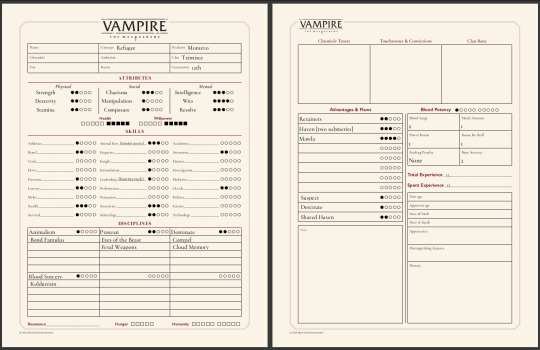
And now, a playable ancilla, the Lady of the Scene! This concept eschews broad Disciplines in favour of deeper Koldunism and a more developed Famulus; they're a leader, not a fighter. They've been around for a while, building a community around themself and embedding themselves into the city at large. They're not exactly famous, but it's known that they can intercede on your behalf and get things done. If you have a problem nobody else can help with, the witch is there...
We've got some classic vampire weaknesses: the invitation thing works for an old-fashioned Tzimisce (this one's much more Old Clan in feeling, without even the potential for Vicissitude) and holy water ties nicely to selecting water as their Koldunic element (I see this character having a scrying pool in their basement). There's some post-Sabbat baggage in the form of the Shunned flaw, and Stigmata feels like an appropriate "hide in plain sight" choice for a character who could well be a cult leader. In fact, if we look closely at the sheet, I went more specific with this one without meaning to... I engineered this with the Santa Muerte cult in mind, and that's the concept I'd lean into if and when I personally got to play this one.
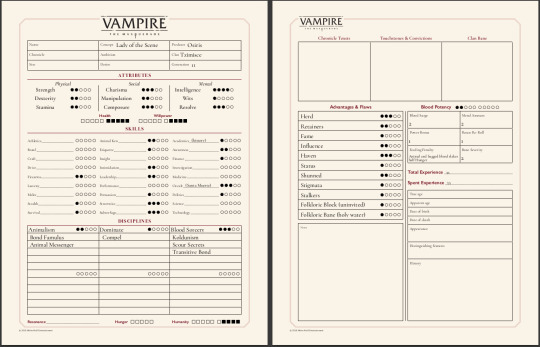
This is the first time I've shared something like this, but I really hope people like it, and it makes sense, because I love building premades and I could very easily do more of these. Maybe even by request? If you've got a concept you want me to put some numbers behind, get in my askbox. Otherwise I'm gonna start blurting about the Redemption coterie - unless people REALLY hate the focus on sheets and numbers and want me to go away and stop talking.
10 notes
·
View notes
Photo
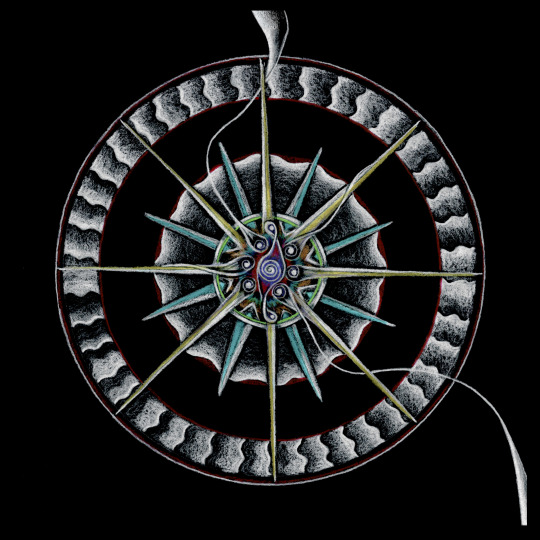

Soul Ignition
The Energetic Cell Mandala Chakra, The ignition of the Soul, When the chakras unite.
Mandala Chakra of the Energy Cell, The Energetic Cell Mandala Chakra, The ignition of the Soul, When the chakras unite.Awaken our cellular memory and the energetic nature of our being. Our energy body holds our souls blueprint just as our DNA holds our physical blueprint. We are made of energetic cells that vibrate at very unique frequencies which are in constant motion.This mandala is a physical representation of what that may look like.
Sacral Chakra – Sacred Geometry – Vesica Piscis
The sacral chakra is symbolic of the Portal of Life or Vesica Piscis. Here the circle, as the “one”, divides itself into two for continued creation. An example of this would be the archetypal story of the cosmic void that birthed mother earth and father sky so they could join together to birth life on earth as male and female. The Portal of Life also represents the womb of the sacred feminine, associated with the lunar cycles and the creation essence of water.For students of Pythagoras (Greek philosopher circa 570-490BCE) a vesica piscis meant “measure of a fish”, which was seen as the intersection of the watery world of matter with the divine world of the sun. They saw math as a path to spiritual liberation.They defined one as the monad, the creator of many and sum of all. Two was the duad, the separating force of duality while three was the sacred and unifying triad created by the monad and duad. An example of a monad is the sun, with the earth and moon as the separating forces of the duad. The triad occurs when the sun and moon come together to create life on earth. This creation dance between unity and duality can be understood by seeing a singular species such as homo sapiens (monad) as both male and female (duad) who join together as homo sapiens (triad) to create life. This dynamic is found in numerous creation stories.A vesica piscis, when turned on its side, is symbolic of the human eye as a mirror to the soul. For some, the vesica piscis represents the womb of Mary as the coming together of heaven and earth through Jesus, the fisher of men as part man, part god. A stylized version of this is called an ichthys or “Jesus Fish.”The vesica piscis is also known as a mandorla (almond in Italian) because of its almond shape. The seven-branched Menorah in Judaism represents an almond tree that symbolizes the union of the earthly Tree of Knowledge with the divine Tree of Life. For Muslims the Vesica Piscis represents the womb of the universe that holds the sacred black stone, the ovum of the universe, in the East corner of the Kaaba in Mecca.The Vesica Piscis symbolizes the birth of humanity and the sacred creation essence within all of us. It reminds us that we are all one.Message: Let go of limiting beliefs and be open to new solutions and synchronicities. Enjoy the push and pull of the creative process by remembering that there are no mistakes, only insights. Look for a potential partnership or community that supports your creative vision.“
You must have chaos within you to give birth to a dancing star.” – Friedrich Nietzsche
55 notes
·
View notes
Text
Drow food
Drow fish butchering technique:
-Traditionally, the fish is killed via quick decapitation and exsanguination (helped with water). The blood is sold immediately, and most Drow housewives who can afford it would have a small hermetic pot for this very purpuse. A fisher shop would usually have an ash and clay paste for their clients to seal the pot. A dish composed of thinly sliced mushrooms and fish blood, baked in a geothermal oven, is considered a delicacy.
-The fish is skinned, in as much of a large piece as possible. While the main butcher skin the main body, the assistant would break open the fish head with a rock to remove the brain and eyes, considered both delicacies, and are sold immediately. Clients would stand in a tight line in hopes of being able to purchase those, extremely fresh.
-Next, fins and gills are cut off and generally sold to tavern owners, possibly along with the spine. This is mostly used to make the soups.
-Organs are removed. The stomach and blader is thrown out, but the liver, main blood vessle, swim bladder, kidneys, reproductive organs and heart are sold as delicacies onced cleaned. They have to be cooked and eaten right away as these parts rot quickly. The intestines are kept to be sold, but to craftspeople (either tanners or housewives) to be used to make threads as opposed to consummed as food.
-The bones are removed, by the main butcher. The assistant would busy himself scraping off flesh from the skull, spine and ribs. The small pieces of meat between the ribs are scrapped as much as possible, and usually turned into a paste that is usually sold fresh and consumed geo-baked by particulars. Fish bones are usually used to make needles and pins. The bones that are too small to be useable would later be crushed into a paste with some maggots, and used in good times as pet food, in bad times as emergency food for drow.
-The flesh of the fish is cut into manageable pieces, either sold immediately or dry-aged to be sold later. As they only have access to cave fresh water fish, so all fish would be cooked, either usually in a baked geothermal stew, steamed or grilled.
Traditional Drow meals are eaten as follow:
-Layer mushrooms are the staple food.
-Every day, some packed mushrooms allowed to grow edible molds are the main source of food, as usually eaten as is, at breakfast, lunch and supper, with some fresh water as a drink. Meals are consummed with the entire family at very specific hours, as keeping routines across generation is an important part of honoring the dead. Having a messy eating squedule is considered about as unacceptable as to spit on someone's grave.
-Once a week, the family a family would go to consume soup at a taberna. The typical dish is some soup, usually made with not the best water and some dried mushrooms and dried maggots, and eaten with rané. If a family can afford it, better, thicker fish broth with cleaner water and more mushrooms, with on special occasion steamed fish brain and liver. Stews are a luxury. In all cases, it's always eaten with rané.
-On special occasions, waiting in line to use a public oven would be preferable, usually to cook a kind of half-boudin, half-gravy dish composed of raw fresh mushrooms and fish blood and organs, baked. For those less fortunate, a little bit of fish meat is baked with mushroom "bread".
-Lactic acid fermented foods are reserved to royalty, and even them can only eat this once per year.
-Drow, because of how salt-dependant the rané they depend for oxygen are, have cultural taboos about the consumption of salt, and refuse to eat it.
-Spiders, small brown bats and cats are taboo to eat, as they are held in high regard as sacred animals or useful companions.
-They have no problems with eating magots.
-They would occasionally engage in cannibalism and anthropophagy if the individual is a condemned criminal. Typically, those who are sentenced to execution are eaten after their death as part of the sentenced.
-Because of how painful rané consumption is, they would out of politeness eat almost anything, even if it directly harms them (up to a certain extent), but they would never, unless absolutely starving, consume taboo things.
12 notes
·
View notes
Text

Scusami se mi prendo la libertà, ma... Tu non mi sembri per niente un cuor contento. La conosci la storia del Re Pescatore? Comincia col re da ragazzo, che doveva passare la notte nella foresta per dimostrare il suo coraggio e diventarere. E mentre passa la notte da solo è visitato da una visione sacra: nel fuoco del bivacco gli appare il Santo Graal, simbolo della grazia divina. E una voce dice al ragazzo: "Tu custodirai il Graal, onde possa guarire i cuori degli uomini". Ma il ragazzo, accecato dalla visione di una vita piena di potere, di gloria, di bellezza, in uno stato di completo stupore, si sentì per un attimo non un ragazzo, ma onnipotente come Dio: allungò la mano per prendere il Graal, e il Graal svanì lasciandogli la mano tremendamente ustionata dal fuoco. E mentre il ragazzo cresceva, la ferita si approfondiva, finché un giorno per lui la vita non ebbe più scopo. Non aveva più fede in nessuno, neanche in se stesso. Non poteva amare, né sentirsi amato. Era ammalato di troppa esperienza, e cominciò a morire. Un giorno un giullare entrò al castello e trovò il re da solo. Ed essendo un semplice di spirito, egli non vide il re: vide solo un uomo solo e sofferente. E chiese al re: "Che ti addolora, amico?". E il re gli rispose: "Ho sete, e vorrei un po' d'acqua per rinfrescarmi la gola". Allora il giullare prese una tazza che era accanto al letto, la riempì d'acqua e la porse al re. Ed il re, cominciando a bere, si rese conto che la piaga si era rimarginata: si guardò le mani e vide che c'era il Santo Graal, quello che aveva cercato per tutta la vita. Si volse al giullare e chiese stupito: "Come hai potuto tu trovare ciò che i miei valorosi cavalieri mai hanno trovato?". E il giullare rispose: "Io non lo so: sapevo solo che avevi sete".
ROBIN WILLIAMS -
************************
Excuse me for taking the liberty, but... You don't strike me as a happy heart at all. Do you know the story of the Fisher King? It begins with the king as a boy, who had to spend the night in the forest to prove his courage and become a king. And while he spends the night alone he is visited by a sacred vision: in the bivouac fire the Holy Grail appears to him, symbol of divine grace. And a voice says to the boy: "You will keep the Grail, so that it can heal the hearts of men". But the boy, blinded by the vision of a life full of power, of glory, of beauty, in a state of complete stupor, felt for a moment not a boy, but omnipotent like God: he reached out to take the Grail, and the Grail vanished leaving his hand terribly burned by the fire. And as the boy grew older, the wound deepened, until one day life for him no longer had any purpose. He no longer had faith in anyone, not even himself. He could not love, nor feel loved. He was sick of too much experience, and he started dying. One day a jester entered the castle and found the king alone. And being simple in spirit, he did not see the king: he only saw a man alone and suffering. And he asked the king, "What ails you, friend?" And the king answered him: "I am thirsty, and I would like some water to cool my throat". Then the jester took a cup that was beside the bed, filled it with water and handed it to the king. And the king, starting to drink, realized that his wound had healed: he looked at his hands and saw that there was the Holy Grail, the one he had sought all his life. He turned to the jester and asked amazed: "How could you find what my brave knights never found?". And the jester replied: "I don't know: I only knew that you were thirsty".
ROBIN WILLIAMS -
12 notes
·
View notes
Text
Ranking Columbo's Top 5 Babygirls
By popular demand (context: nobody asked, I saw it in a dream) I've made a list of the men in Columbo you should absolutely draw in this pose. Please let it be known the presence of the babygirl does not necessarily mean the episode itself is good. Sometimes God gives its strongest babygirls its weirdest episodes.
Criteria for this was pretty obvious:
Are they absolutely sopping wet
Is there some odd sexual tension there
Would I let them hit it
5. Alex Brady (S8 Ep2: Murder, Smoke, and Shadows)

Photo credit: columboscreens.com
So 5 was a tough spot because I knew what my top 4 were going to be pretty handily, but this was going to be one that was lacking in one or the other criteria set out above. In the end, it was between the soaking wet Emmett Clayton (S2 Ep7, The Most Dangerous Match) and the unhinged Alex Brady. In the end, I judged it on the most sacred criteria: what that dick do. And there is no way Clayton's dick game is anything but awful, if its anything like his chess game.
Fisher Steven's character though is an insane, controlling chaos goblin that's fun to watch when he's winning and even more fun to watch while he's losing. Fortunately he loses, a Lot. Later seasons of Columbo can often feel less about the titular detective and much more about the murderers, but I'd argue in this case its for the best as we watch him completely unravel (and in one famous instance, hallunicate Columbo in a Ringmaster's outfit).
4. Joe Devlin (S7 Ep5: The Conspirators)

Photo credit: columboscreens.com
Who is this man smiling at? His wife, a lover perhaps? What about the detective that's going to bust his ass for murder and illegal firearms trading? Were it not for Clive Revill and Peter Falk's chemistry, this episode about a man funneling weapons to the IRA would be... Challenging. Instead he's just kind of a chill dude in over his head who, to quote Columbo Screens, "wants to fuck Columbo so bad it makes them look stupid".
That being said, he most certainly corners the market on being a sad little man when trying to get ahold of those guns. His initial encounter with the RV Salesman easily tops my "most pathetic Columbo villain moments" as he struggles to find innuendo for guns while the RV Salesman politely tries to turn him down like a thirsty dude at a bar.
3. Dale Kingston (S1 Ep4: Suitable for Framing)

Photo credit: Columbophile.com
What he lacks in obvious chemistry with Columbo he makes up in wearing a frilly, crushed velvet suit and being just so extremely gay. Ross Martin's performance as the murderer and art critic is a powerhouse in a likewise tightly written episode. When he's not begging Columbo to leave him alone in the most sopping-wet manner possible he's making snide, catty comments about the art world. I wouldn't be surprised if Joel Cairo was a touchstone for his performance.
I would also be negligent to not say that when he's finally caught his lower lip literally fucking trembles. That final scene is so goddamn good though I won't link it, so go watch the whole episode for yourself.
2. Roger Stanford (S1 Ep6: Short Fuse)

Photo credit: columboscreens.com
Let it be known I had to fight the temptation hard to not just use the Roddy MacDowell cock photo. It would've been so fucking easy man. But I think this photo better captures the impish, effervescent performance he gives as the chemical company heir. He spends so much of this episode capering about, pulling pranks, wearing pants so tight you can see the outline of his co-
ANYWAY he isn't super soaking wet in the beginning, but through the episode you watch him slowly becoming more and more frazzled, more exasperated, more testy until it finally culminates in an explosive (pun intentional) final gotcha by Columbo. Watching Roddy MacDowell completely break down into a fit of laughter, putting his scholarship chain around Columbo's neck and affectionately patting his cheeks, you can't help but be awestruck by its weirdness, its patheticness, and how it's kinda... y'know...
1. Ward Fowler (S6 Ep1: Fade Into Murder)

Image credit: columbophile.com
Maybe this is a controversial top pick, but hear me out: never has a Columbo villain been so pathetic, so attractive, and so obviously into Columbo before. William Shatner plays a man playing a TV detective against a man playing a real detective, and the way he decides to do that is by having Ward be absolutely captivated by Columbo.
Ward is so desperate to get Columbo's approval, often trying to relate his real life experiences to the tropes he's played on TV as Detective Lucerne. Getting away with the murder of his blackmailing wife feels like a distant second of just getting Columbo to like him.
It all culminates with Ward filming Columbo with one of their TV camera, the latter unable to even get a single line out without dissolving into giggles. Afterwards they review the footage filmed while - dare I say it - CUDDLING on the couch???? Apparently Shatner and Falk actually hit it off immediately on set, which must speak to Falk's magnetic personality more than anything else.
This is the only performance I can describe on Columbo as "cute". Shatner schoolboy cruch on Columbo is so cute (and simultaneously so sad considering you know, the murder) that it feels unfair to not give him the top spot.
Anyway, all the credit to the Columbophile Blog for inspiring me to write this post, and to Columbo Screens for the gorgeous screenshots and being the de facto Columbo authority on Tumblr.
4 notes
·
View notes
Note
Could you do some more Falmari and Teleri Headcannons. Like i think that they would have tamed or formed bonds with marine mammals like Orca's and whales and adopt them into their family so if you don't mind could you do some headcannons about this pls thks .
Absolutely! I love this kind of world building
I’ll do the Teleri of Aman here! More in the tag!
First main set of Teleri world building
Teleri and marine mammals headcanons:
I love the idea of bonding with marine mammals! Especially considering their connection to Uinen and Ossë it makes sense! Perhaps it was Uinen who taught them to recognize different whale songs.
@orcinusorca2236
The climate of Alqualondë is mild and a variety of marine mammals can be seen from the coasts, with still more common in deeper water and known more to sailors and fishers. These species are seen in motifs, art, poetry, song and folktale of the Teleri. (I can make a full post about environment and marine mammals from an ecological perspective if you're interested!)
Tales of elven children during the Great Journey becoming lost or nearly drowning and being rescued by families of whales are told and painted. Telerin children are taught from a young age to respect the creatures of the ocean and their power and size.
There are those among the Teleri who can speak more directly to animals, who learn their tongues with ease (as Celegorm does for example).
It's not uncommon for Teleri fishers and sailors to recognize the same whales on return journeys, to know their habits. Whale migrations and journeys are studied and mapped by Telerin scholars, some of whom actually travel alongside them.
Likewise, families who live on the water (I headcanon some of them do live on their boats though this is more common with the river elves and Falathrim of Beleriand) and those who live above or beside it will often have creatures they recognize and maintain friendships with. Seals who wait for offerings of fish from familiar people, whales who approach the shallower water out of curiosity to see certain families on the shore.
Beached whales are extremely rare as the waters around Alqualondë hold the power of Ulmo but when they do occur, it is a crisis that will bring any nearby residents at once.
Many Telerin healers have studied injuries that occur to marine mammals from sea monsters and other forces. These are as well documented as injuries to elves
Beaches where seals frequently congregate are often considered sacred.
I hope this is ok! As always please feel free to ask more!
28 notes
·
View notes
Text
Squash's Book Roundup 2023
Last year I read 67 books. This year my goal was 70, but I very quickly passed that, so in total I read 92 books this year. Honestly I have no idea how I did it, it just sort of happened. My other goal was to read an equal amount of fiction and nonfiction this year (usually fiction dominates), and I was successful in that as well. Another goal which I didn’t have at the outset but which kind of organically happened after the first month or so of reading was that I wanted to read mostly strange/experimental/transgressive/unusual fiction. My nonfiction choices were just whatever looked interesting or cool, but I also organically developed a goal of reading a wider spread of subjects/genres of nonfiction. A lot of the books I read this year were books I’d never heard of, but stumbled across at work. Also, finally more than 1/3 of what I read was published in the 21st century.
I’ll do superlatives and commentary at the end, so here is what I read in 2023:
-The Commitments by Roddy Doyle
-A Simple Story: The Last Malambo by Leila Guerriero
-The Hero With A Thousand Faces by Joseph Campbell
-Uzumaki by Junji Ito
-Chroma by Derek Jarman
-The Emerald Mile: The epic story of the fastest ride in history through the Grand Canyon by Kevin Fedarko
-Venus by Suzan-Lori Parks
-The Hearing Trumpet by Leonora Carrington
-Sacred Sex: Erotic writings from the religions of the world by Robert Bates
-The Virginia State Colony For Epileptics And The Feebleminded by Molly McCully Brown
-A Spy In The House Of Love by Anais Nin
-The Sober Truth: Debunking the bad science behind 12-step programs and the rehab industry by Lance Dodes
-The Sailor Who Fell From Grace With The Sea by Yukio Mishima
-The Aliens by Annie Baker
-The Criminal Child And Other Essays by Jean Genet
-Aimee and Jaguar: A Love Story, Berlin 1943 by Erica Fischer
-The Master And Margarita by Mikhail Bulgakov
-The Mustache by Emmanuel Carriere
-Maldoror by Comte de Lautreamont
-Narrow Rooms by James Purdy
-At Your Own Risk by Derek Jarman
-Escape From Freedom by Erich Fromm
-Countdown: A Subterranean Magazine #3 by Underground Press Syndicate Collective
-Fabulosa! The story of Britain's secret gay language by Paul Baker
-The Golden Spruce: A true story of myth, madness and greed by John Vaillant
-Querelle de Roberval by Kevin Lambert
-Fire The Bastards! by Jack Green
-Closer by Dennis Cooper
-The Woman In The Dunes by Kobo Abe
-Opium: A Diary Of His Cure by Jean Cocteau
-Worker-Student Action Committees France May '68 by Fredy Perlman and R. Gregoire
-Capitalist Realism by Mark Fisher
-The Sound Of Waves by Yukio Mishima
-One Day In My Life by Bobby Sands
-Corydon by Andre Gide
-Noopiming by Leanne Betasamosake Simpson
-Man Alive: A true story of violence, forgiveness and becoming a man by Thomas Page McBee
-The Artist's Reality: Philosophies of Art by Mark Rothko
-Damage by Josephine Hart
-Schoolgirl by Osamu Dazai
-The Passion According to G.H. by Clarice Lispector
-The Sex Revolts: Gender, Rebellion and Rock n Roll by Simon Reynolds and Joy Press
-The Traffic Power Structure by planka.nu
-Bird Man: The many faces of Robert Straud by Jolene Babyak
-Seven Dada Manifestos by Tristan Tzara
-The Journalist by Harry Mathews
-Bullshit Jobs by David Graeber
-Moscow To The End Of The Line by Venedikt Erofeev
-Morvern Callar by Alan Warner
-The Poetics Of Space by Gaston Bachelard
-A Boy's Own Story by Edmund White
-The Coming Insurrection by The Invisible Committee
-Jesus' Son by Denis Johnson
-Notes From The Sick Room by Steve Finbow
-Artaud The Momo by Antonin Artaud
-Doctor Rat by William Kotzwinkle
-Recollections Of A Part-Time Lady by Minette
-trans girl suicide museum by Hannah Baer
-The 99% Invisible City by Roman Mars
-Sweet Days Of Discipline by Fleur Jaeggy
-Breath: The new science of a lost art by James Nestor
-What We See When We Read by Peter Mendelsund
-The Cardiff Tapes (1972) by Garth Evans
-The Ark Sakura by Kobo Abe
-Mad Like Artaud by Sylvere Lotringer
-The Story Of The Eye by Georges Bataille
-Little Blue Encyclopedia (For Vivian) by Hazel Jane Plante
-Blood And Guts In High School by Kathy Acker
-Summer Fun by Jeanne Thornton
-Splendid's by Jean Genet
-VAS: An Opera In Flatland by Steve Tomasula
-Sorry I'm Late, I Didn't Want To Come: One introvert's year of saying yes by Jessica Pan
-Whores For Gloria by William T. Vollmann
-The Notebooks by Jean-Michel Basquiat, Larry Walsh (editor)
-L'Astragale by Albertine Sarrazin
-The Decay Of Lying and other essays by Oscar Wilde
-The Immortal Life Of Henrietta Lacks by Rebecca Skloot
-Open Throat by Henry Hoke
-Prisoner Of Love by Jean Genet
-The Fifth Wound by Aurora Mattia
-The Communist Manifesto by Karl Marx
-My Friend Anna: The true story of a fake heiress by Rachel DeLoache Williams
-Mammother by Zachary Schomburg
-Building The Commune: Radical democracy in Venezuela by George Cicarello-Maher
-Blackouts by Justin Torres
-Cheapjack by Philip Allingham
-Near To The Wild Heart by Clarice Lispector
-The Trayvon Generation by Elizabeth Alexander
-Skye Papers by Jamika Ajalon
-Exercises In Style by Raymon Queneau
-Tender Buttons by Gertrude Stein
-The Feather Thief: Beauty, Obsession, and the Natural History Heist of the Century by Kirk Wallace Johnson
~Some number factoids~
I read 46 fiction and 46 nonfiction. One book, The Fifth Wound by Aurora Mattia, is fictionalized/embellished autobiography, so it could go half in each category if we wanted to do that, but I put it in the fiction category.
I tried to read as large a variety of nonfiction subjects/genres as I could. A lot of the nonfiction I read has overlapping subjects, so I’ve chosen to sort by the one that seems the most overarching. By subject, I read: 5 art history/criticism, 5 biographies, 1 black studies, 1 drug memoir, 2 essay collections, 2 history, 2 Latin American studies, 4 literary criticism, 1 music history, 2 mythology/religion, 1 nature, 4 political science, 2 psychology, 5 queer studies, 2 science, 1 sociology, 1 travel, 2 true crime, 3 urban planning.
I also read more queer books in general (fiction and nonfiction) than I have in years, coming in at 20 books.
The rest of my commentary and thoughts under a cut because it's fairly long
Here’s a photo of all the books I read that I own a physical copy of (minus Closer by Dennis Cooper which a friend is borrowing):

~Superlatives and Thoughts~
I read so many books this year I’m going to do a runner-up for each superlative category.
Favorite book: This is such a hard question this year. I think I gave out more five-star ratings on Goodreads this year than I ever have before. The books that got 5 stars from me this year were A Simple Story: The Last Malambo by Leila Guerriero, Capitalist Realism by Mark Fisher, The Emerald Mile by Kevin Fedarko, The Mustache by Emmanuel Carriere, The Passion According to GH by Clarice Lispector, trans girl suicide museum by Hannah Baer, The Fifth Wound by Aurora Mattia, Mammother by Zachary Schomburg, and Blackouts by Justin Torres.
But I think my favorite book of the year was The Fifth Wound by Aurora Mattia. It is an embellished, fictionalized biography of the author’s life, chronicling a breakup that occurred just before she began her transition, and then a variety of emotional events afterward and her renewal of a connection with that person after a number of years had passed. The writing style is beautiful, extremely decadent, and sits in a sort of venn diagram of poetry, theory, fantasy and biography. My coworker who recommended this book to me said no one she’d recommended it to had finished it because they found it so weird. I read the first 14 pages very slowly because I didn’t exactly know what the book was doing, but I quickly fell completely in love with the imagery and the formatting style and the literary and religious references that have been worked into the book both as touchstones for biography and as vehicles for fantasy. There is a video I remember first seeing years ago, in which a beautiful pinkish corn snake slithers along a hoop that is part of a hanging mobile made of driftwood and macrame and white beads and prism crystals. This was the image that was in the back of my head the entire time I was reading The Fifth Wound, because it matched the decadence and the strangeness and the crystalline beauty of the language and visuals in the book. It is a pretty intense book, absolutely packed with images and emotion and ideas and preserved vignettes where reality and fantasy and theory overlap. It’s one of those books that’s hard to describe because it’s so full. It’s dense not in that the words or ideas are hard to understand, but in that it’s overflowing with imagery and feelings, and it feels like an overflowing treasure chest.
Runner-up:The Mustache by Emmanuel Carriere. However, this book wins for a different superlative, so I’ve written more about it there.
Least favorite book: Querelle de Roberval by Kevin Lambert. I wrote a whole long review of it. In summary, Lambert’s book takes its name from Querelle de Brest, a novel by Jean Genet, and is apparently meant to be an homage to Genet’s work. Unfortunately, Lambert seems to misunderstand or ignore all the important aspects of Genet’s work that make it so compelling, and instead twists certain motifs Genet uses as symbols of love or transcendence into meaningless or negative connotations. He also attempts to use Genet’s mechanic of inserting the author into the narrative and allowing the author to have questionable or conflicting morals in order to emphasize certain aspects of the characters or narrative, except he does so too late in the game and ends up just completely undermining everything he writes. This book made me feel insulted on behalf of Jean Genet and all the philosophical thought he put into his work.
Runner-up: What We See When We Read by Peter Mendelsund. This graphic designer claims that when people read they don’t actually imagine what characters look like and can’t conjure up an image in their head when asked something like “What does Jane Eyre look like to you?” Unfortunately, there’s nothing scientific in the book to back this up and it’s mostly “I” statements, so it’s more like “What Peter Mendelsund Sees (Or Doesn’t See) When He Reads”. It’s written in what seems to be an attempt to mimic Marshall McLuhan’s style in The Medium Is The Massage, but it isn’t done very well. I spent most of my time reading this book thinking This does not reflect my experience when I read novels so I think really it’s just a bad book written by someone who maybe has some level of aphantasia or maybe is a visual but not literary person, and who assumes everyone else experiences the same thing when they read.
(Another runner-up would be The Hero With A Thousand Faces by Joseph Campbell, but I think that’s a given because it’s an awful piece of revisionist, racist trash, so I won’t write a whole thing about it. I can if someone wants me to.)
Most surprising/unexpected book: The Mustache by Emmanuel Carriere. This book absolutely wins for most surprising. However, I don’t want to say too much about it because the biggest surprise is the end. It was the most shocking, most unexpected and bizarre endings to a novel I’ve read in a long time, and I absolutely loved it. It was weird from the start and it just kept getting weirder. The unnamed narrator decides, as a joke, to shave off the moustache he’s had for his entire adult life. When his wife doesn’t react, he assumes that she’s escalating their already-established tradition of little pranks between each other. But then their mutual friends say nothing about the change, and neither do his coworkers, and he starts spiral into confusion and paranoia. I don’t want to spoil anything else because this book absolutely blew me away with its weirdness and its existential dread and anyone who likes weird books should read it.
Runner-up: Morvern Callar by Alan Warner. I don’t even know what compelled me to open this book at work, but I’m glad I did. The book opens on Christmas, where the main character, Morvern, discovers her boyfriend dead by suicide on the kitchen floor of their flat. Instead of calling the police or her family, she takes a shower, gets her things and leaves for work. Her narrative style is strange, simultaneously very detached and extremely emotional, but emotional in an abstract way, in which descriptions and words come out stilted or strangely constructed. The book becomes a narrative of Morvern’s attempts to find solitude and happiness, from the wilderness of Scotland to late night raves and beaches in an unnamed Mediterranean city. The entire book is scaffolded by a built-in playlist. Morvern’s narrative is punctuated throughout by accounts of exactly what she’s listening to on her Walkman. The narrative style and the playlist and the bizarre behavior of the main character were not at all what I was expecting when I opened the book, but I read the entire book in about 3 hours and I was captivated the whole time. If you like the Trainspotting series of books, I would recommend this one for sure.
Most fun book: The Emerald Mile by Kevin Fedarko. This book was amazing. It was like reading an adventure novel and a thriller and a book on conservationism all wrapped into one and it was clearly very passionately written and it was a blast. I picked it up because I was pricing it at work and I read the captions on one of the photo inserts, which intrigued me, so I read the first page, and then I couldn’t stop. The two main narratives in the book are the history of the Grand Canyon (more specifically the damming of the Colorado River) and the story of a Grand Canyon river guide called Kenton Grua, who decided with two of his river guide friends to break the world record for fastest boat ride down the Colorado River through the Grand Canyon. The book is thoroughly researched, and reaches back to the first written record of the canyon, then charts the history of the canyon and the river up to 1983 when Grua made his attempt to race down the river, and then the aftermath and what has happened to everyone in the years since. All of the historical figures as well as the “current” figures of 1983 come to life, and are passionately portrayed. It’s a genuine adventure of a book, and I highly recommend it.
Runner-up: Summer Fun by Jeanne Thornton. It asks “What if Brian Wilson of the Beach Boys was actually a trans woman?” Actually, that’s not quite it. It asks “What if a trans woman living in poverty in southwest America believed to an almost spiritual level that Brian Wilson was a trans woman?” The main character and narrator, Gala, is convinced that the lead singer of her favorite band, the Get Happies, (a fictional but fairly obvious parallel to the Beach Boys) is a trans woman. Half the book is her writing out her version of the singer’s life history, and the other half is her life working at a hostel in Truth Or Consequences, New Mexico, where she meets a woman who forces her out of her comfort zone and encourages her to face certain aspects of her self and identity and her connection with others. It’s a weird novel, and definitely not for everyone, but it’s fun. I was reading it on the train home and I was so into it that I missed my stop and had to get off at the next station and wait 20 minutes for the train going back the other way.
Book that taught me the most: Breath: The new science of a lost art by James Nestor. In it, Nestor explores why humans as a general population are so bad at breathing properly. He interviews scientists and alternative/traditional health experts, archaeologists, historians and religious scholars. He uses himself as a guinea pig to experiment with different breathing techniques from ancient meditation styles to essentially overdosing on oxygen in a lab-controlled environment to literally plugging his nose shut to only mouth-breathe for two weeks (and then vice-versa with nose breathing). It was interesting to see a bunch of different theories a laid out together regarding what kind of breathing is best, as well as various theories on the history of human physiology and why breathing is hard. Some of it is scientific, some pseudoscience, some just ancient meditation techniques, but he takes a crack at them all. What was kind of cool is that he tries every theory and experiment with equal enthusiasm and doesn’t really seem to favor any one method. Since he’s experimenting on himself, a lot of it is about the effects the experiments had on him specifically and his experiences with different types of breathing. His major emphasis/takeaway is that focusing on breathing and learning to change the ways in which we breathe will be beneficial in the long run (and that we should all breath through our noses more). While I don’t think changing how you breathe is a cure-all (some of the pseudoscience he looks at in this book claims so) I certainly agree that learning how to breath better is a positive goal.
Runner-up: The Sober Truth by Lance Dodes. I say runner-up because a lot of the content of the book is things that I had sort of vague assumptions about based on my knowledge of addiction and AA and mental illness in general. But Dodes put into words and illustrated with numbers and anecdotes and case studies what I just kind of had a vague feeling about. It was cool to see AA so thoroughly debunked by an actual psychiatrist and in such a methodical way, since my skepticism about it has mostly been based on the experiences of people I know in real life, anecdotes I’ve read online, or musicians/writers/etc I’m a fan of that went through it and were negatively affected.
Most interesting/thought provoking book: Mammother by Zachary Schomburg. The biggest reason this book was so interesting is because the little world in which it exists is so strange and yet so utterly complete. In a town called Pie Time (where birds don’t exist and the main form of work is at the beer-and-cigarettes factory) a young boy called Mano who has been living his childhood as a girl decides that he is now a man and that it’s time for him to grow up. As this happens, the town is struck by an affliction called God’s Finger. People die seemingly out of nowhere, from a hole in their chest, and some object comes out of the hole. Mano collects the things that come out of these holes, and literally holds them in order to love them, but the more he collects, the bigger he becomes as he adds objects to his body. A capitalist business called XO shows up, trying to convince the people of Pie Time that they can protect themselves from God’s Finger with a number of enterprises, and starts to slowly take over the town. But Mano doesn’t believe death is something that should be run from. This book is so pretty, and the symbolism/metaphors, even when obvious, feel as though they belong organically in the world. A quote on the back of the book says it is “as nearly complete a world as can be”, and I think that’s a very accurate description. The story is interesting, the characters are compelling, and the magical realist world in which the story exists is fascinating.
Runner up: trans girl suicide museum by Hannah Baer. This is a series of essays taken (for the most part) from Baer’s blog posts. They span a chunk of time in which she writes her thoughts and musings on her experience transition and transgender existence in general. It is mostly a series of pieces reflecting on “early” stages of transition. But I thought it was really cool to see an intellectual and somewhat philosophical take on transition, written by someone who has only been publicly out for a few years, and therefore is looking at certain experiences with a fresh gaze. As the title suggests, a lot of the book is a bit sad, but it’s not all doom and gloom. A lot of the emphasis is on the important of community when it comes to the experience of starting to transition and the first few years, and the importance of community on the trans experience in general. I really liked reading Hannah Baer’s thoughts as a queer intellectual who was writing about this stuff as she experienced it (or not too long after) rather than writing about the experience of early transition years and years down the line. It meant the writing was very sharp and the emotion was clear and not clouded by nostalgia.
Other thoughts/commentary on books I don’t have superlatives for:
I’m glad my first (full) book read in 2023 was A Simple Story: The Last Malambo by Leila Guierrero. It’s a small, compact gem of a book that follows the winner of an Argentinian dance competition. The Malambo is a traditional dance, and the competition is very fierce, and once someone wins, they can never compete again. The author follows the runner-up of the previous year, who has come to compete again. It paints a vivid picture of the history of the dance, the culture of the competition, and the character of the dancer the author has chosen to follow. It’s very narrowly focused, which makes it really compelling.
The Hearing Trumpet by Leonora Carrington could have easily won for most fun or most interesting book. Carrington was a surrealist writer and painter (and was in a relationship with Max Ernst until she was institutionalized and he was deported by the Nazis). In The Hearing Trumpet, an elderly woman called Marian is forced by her family to go live in an old ladies’ home. The first strange thing about the place is that all of the little cabins each woman lives in is shaped like some odd object, like an iron, or ice cream, or a rabbit. The other old women at the institution are a mixed bag, and the warden of the place is hostile. Marian starts to suspect that there are secrets, and even witchcraft involved, and she and a few of the other ladies start to try and unravel the occult mysteries hidden in the grounds of the home. The whole book is fun and strange, and the ending is an extremely entertaining display of feminist occult surrealism.
Sacred Sex: Erotica writings from the religions of the world by Robert Bates was a book I had to read for research for my debunking of Withdrawn Traces. It was really very interesting, but it was also hilarious to read because maybe 5% of any of the texts included were actually erotic. It should have been called “romantic writings from the religions of the world” because so little of the writing had anything to do with sex, even in a more metaphorical sense.
Every time I read Yukio Mishima I’m reminded how much I love his style. The Sailor Who Fell From Grace With The Sea almost usurped The Temple of the Golden Pavilion as my favorite Mishima novel. I’m fascinated with the way that Mishima uses his characters to explore the circumstance of having very intense feelings or reactions towards something and simultaneously wanting to experience that, while also wanting to have complete control and not feel them at all. There’s a scene in this novel where Noboru and his friends brutally kill and dissect a cat; it’s an intense and vividly rendered scene, made all the more intense by Noboru desperately conflicted between feeling affected by the killing and wanting to force himself to feel nothing. The amazing subtle theme running through the book is the difference between Noboru’s intense emotions and his desire/struggle to control them and subdue them versus Ryuji’s more subtle emotion that grows through the book despite his natural reserve. I love endings like the one in this book, where it “cuts to black” and you don’t actually see the final act, it’s simply implied.
In 2016 or 2017, I ran lights for a showcase for the drama department at UPS (I can’t remember now what it was) that included a bunch of scenes from various plays. I remember a segment from Hir by Taylor Mac, and a scene from The Aliens by Annie Baker. In the scene that I saw, one of the characters describes how when he was a boy, he couldn’t stop saying the word ladder, and the monologue culminates in a full paragraph that is just the word “ladder.” I can’t remember who was acting in the one that I saw at UPS, but that monologue blew me away, the way that one word repeated 127 conveyed so much. This year a collection of Annie Baker’s plays came in at work so I sat down and read the whole play and it was just incredible. I’d love to see the full play live, it’s absolutely captivating.
Narrow Rooms by James Purdy was a total diamond in the rough. It takes place in Appalachia, in perhaps the 1950s although it’s somewhat hard to tell. It follows the strange gay entanglement between four adult men in their 20s, who have known each other all their lives. It traces threads of bizarre codependency, and the lines crossed between love and hate. The main character, Sidney, has just returned home after serving a sentence for manslaughter. On his return, he finds that an old lover has been rendered disabled in an accident, and that an old school rival/object of obsession has been waiting for him. This rival, nicknamed “The Renderer” because of an old family occupation, has been watching Sidney all their lives. Both of them hate the other, but know that they’re destined to meet in some way. Caught in the middle of their strange relationship are Gareth, Sidney’s now-disabled former lover, and Brian, a young man who thinks he’s in love with The Renderer. The writing style took me some time to get used to, as it is written as though by someone who has taught themselves, or has only had basic classes on fiction writing. But the plot itself is so strange and the characters are so stilted in their own internality that it actually fits really well. Like The Mustache, this book had one of the strangest, most intensely visceral and shocking endings I’ve read in a while. It was also “one that got away.” I read it at work, then put it on my staff picks shelf, and only realized after someone else bought it that I should have kept it for myself.
The Passion According to G.H. by Clarice Lispector blew my mind. I really don’t want to spoil any of it, but I highly encourage anyone who hasn’t read it to do. The build in tension is perfect and last 30 pages are just incredible. Lispector’s style is so unique and so beautiful and tosses out huge existential questions like it’s nothing, and I love her work so much.
Moscow To The End Of The Line by Venedikt Erofeev was another really unexpected book. It’s extremely Russian (obviously) and really fun until suddenly it isn’t. The main character, a drunkard, gets on a train from Moscow to Petushki, the town at the end of the line (hence the title), in order to see his lover. On the way, he befriends the other people in his train car and they all steadily get drunker and drunker, until he falls asleep and misses his stop. Very Russian, somewhat strange, and I was surprised that it was written in the late 60s and not the 30s.
Dr. Rat by William Kotzwinkle was what I expected. Weird in a goofy way, a bit silly even when it’s serious, and rather heavy-handed satire. The titular Dr Rat is a rat who has spent his whole life in a laboratory and has gone insane. The other animals who are being tested on want to escape, but he’s convinced that all the testing is for the good of science and wants to thwart their rebellion. Unfortunately, all the other animals who are victims of human cruelty/callousness/invasion/deforestation/etc around the world are also planning to rebel, connection with each other through a sort of psychic television network. It’s a very heavy-handed environmentalist/anti-animal cruelty metaphor and general societal satire, but it’s silly and fun too.
Confessions Of A Part-Time Lady by Minette is a self-published, nearly impossible to find book that came into my work. It’s self-printed and bound, and was published in the 70s. It is the autobiographical narrative of a trans woman who did drag and burlesque and theatre work all across the midwest, as well as New York and San Francisco, from the 1930s up to the late 60s. It was originally a series of interviews by the two editors, who published it in narrative form, and it includes photos from Minette’s personal collection. It’s an amazing story, and a glimpse into a really unique time period of gender performance and queer life. She even mentions Sylvia Rivera, specifically when talking about gay activism. She talks about how the original group of the Gay Liberation Front was an eclectic mix of all sorts of people of all sexualities and genders and expressions. Then when the Gay Activists Alliance “took over”, they started pushing out people who were queer in a more transgressive or unusual way and there was more encouragement on being more heteronormative. She mentions Sylvia Rivera and Marsha P Johnson, saying “I remember Sylvia Rivera who founded STAR – Street Transvestite Action Revolutionaries. She was always trying to say things – the same kinds of things Marsha P Johnson says in a sweeter way – and they treated her like garbage. If that’s what ‘order’ is, haven’t we had enough?”
Whores For Gloria by William T Vollmann was exactly as amazing as I thought it would be. I love Vollmann’s style, because you can tell that even though the characters he’s writing about are characters, they’re absolutely based on people that he met or saw or spoke to in real life. The main character, Jimmy, is searching for his former lover, Gloria, who has either died or left him (it is unclear for most of the novel). He begins to use tokens bought from sex workers (hair, clothes, etc) to attempt to conjure her into reality, and when that doesn’t work, he pays them to tell him stories from their lives, and through their lives he tries to conjure Gloria. This novel’s ending had extremely similar vibes to the ending of Moscow To The End Of The Line.
Prisoner Of Love by Jean Genet was a lot to take in. It was weird reading it at this moment in time, and completely unplanned. It’s just that I have only a few more books to read before I’ve made my way through all Genet’s works that have been translated into English, and it was next on the list. Most of the book focuses on Genet’s time spent in Palestine in the 70s and his short return in the 80s. He also discusses the time he spent with the Black Panthers in the US, although it’s not the main subject of the book. Viewing Palestine from the point of view of Genet’s weird philosophical and moral worldview was really interesting, because what he chooses to spend time looking at or talking about is probably not what most would focus on, and because even his most political discussions are tinged with the uniquely Genet-style spirituality (if you can call it that? I don’t know what to call it) that is so much the exact opposite of objective. It’s definitely not a book about Palestine I would recommend reading without also having a grasp of Genet’s style of looking at the world and his various obsessions and preoccupations, because they really do inform a lot of his commentary. It was also written 15 years after his first trip to Palestine, partly from memory and partly from journal entries/notes, which gives it a sort of weirdly dreamlike quality much like his novels.
Blackouts by Justin Torres was so amazing! It blends real life and fiction together so well that I didn’t even realize that most of the people he references in the novel are real historical figures until he mentioned Ben Reitman, who I recognized as the Chicago King Of The Hobos and Emma Goldman’s lover. The book follows an unnamed narrator who has come to a hotel or apartment in the southwest in order to care for a dying elderly man called Juan Gay. Juan has a book called Sex Variants, a study of homosexuality from the 1940s which has been censored and blacked out. Back and forth, the narrator and Juan trade stories. The narrator tells his life story up until the present, including his first meeting with Juan in a mental hospital as a teenager. In turn, Juan tells the story of the Sex Variants book and its creator, Jan Gay (Ben Reitman’s real life daughter). The book explores the reliability of narrative, the power of collecting and documenting life stories, and of removing or changing things in order to create new or different narratives.
Again, Clarice Lispector rocking my world! Generally I can read a 200-ish page novel in somewhere between 2 and 4 hours depending on the content/writing style. Near To The Wild Heart took me 9 hours to read because I kept wanting to stop and reread entire paragraphs because they were so interesting or pretty or philosophical. The story focuses on Joana, whose strange way of looking at the world and going through life makes everyone sort of wary of her. This book is so layered I don’t really know how to describe it. So much of it is philosophical or existential musings through the vehicle of Joana. Unsurprisingly, it’s a beautiful book and I highly recommend it.
I’m just going to copy/paste my Goodreads review for Skye Papers by Jamika Ajalon: This book had so much potential that just…fell short. I could tell that it was written for an American audience but the way the reader/Skye is “taught” certain British terms and/or slang felt a bit patronizing. The characters were fleshed out and interesting and I liked them a lot but the plot crumbled quickly in the last half of the book Things sped up to a degree that felt strange and unnatural, the book’s pacing was inconsistent throughout. Perhaps that was deliberate considering the reveal at the climax, but if it was, it should have been utilized better. If the inconsistent pacing wasn’t deliberate, then it just made the book feel strange to read. There were moments were I felt like there should have been more fleshing out of certain character relationships. Even with the reveal at the end and the explanation of Pieces’ erratic/avoidant behavior, I wish there had been more fleshing out of the relationship or friendship between her and Skye at the beginning, when Skye first arrives in London. Characters who seemed cool/interesting got glossed over and instead there was a lot more dwelling on Skye walking around or busking or just hanging out. I could have gone without the last 30 or so pages after the big reveal, where Skye went back through everything that happened with the knowledge she (and the reader) had gained. It dragged on and on and at that point I felt like the whole story was so contrived that I just wasn’t interested anymore. A friend who read this book before I did said she thought it was an experimental novel that just hadn’t gone far enough, and I completely agree with her. I think if the style with the film script interludes went further, into printed visuals or more weirdness with the interludes, more experimental style with the main story, or something, it would have been really good. It just didn’t push hard enough.
The Feather Thief by Kirk Wallace Johnson was a fun little true crime novel about a young flautist who broke into a small English natural history museum in 2009 and stole hundreds of thousands of pounds worth of preserved rare bird skins dating back to the 19th century. He was a salmon fly-tying enthusiast and prodigy, and old Victorian fly designs used feathers of rare birds. The book first goes through the heist and the judicial proceedings, then examines the niche culture of Victorian fly-tying enthusiasts and obsessives, and then chronicles the author’s attempts to track down some of the missing birds. It was a quick, easy read, but fun and an unusual subject and I quite enjoyed it.
In 2024 I don’t plan on trying to surpass or even reach this year’s number. I’m going to start off the year reading The Recognitions by William Gaddis, then I’m going to re-read a number of books that I come across at work or in conversation and think Huh, I should reread that one of these days. So far, the books I am currently planning to reread: Sometimes A Great Notion by Ken Kesey, As I Lay Dying by William Faulkner, The People Of Paper by Salvador Plascencia, Mrs Dalloway by Virginia Woolf, The Mustache by Emmanuel Carriere, McGlue by Otessa Moshfegh, Long Day’s Journey Into Night by Eugene O’Neil, Acid Snow by Larry Mitchell, and Nightwood by Djuna Barnes.
#reading list#book list#book roundup#reading list year in review#books#squash rambles#reading year in review#book list roundup
6 notes
·
View notes
Text
Wednesday, March 13, 2024 Canadian TV Listings (Times Eastern)
WHERE CAN I FIND THOSE PREMIERES?:
LITTLE WING (Paramount+)
TEEN MOM: FAMILY REUNION (MTV Canada) 8:00pm
THE AMAZING RACE (CTV) 9:30pm
NEW TO AMAZON PRIME CANADA/CBC GEM/CRAVE TV/DISNEY + STAR/NETFLIX CANADA:
CBC GEM
QUEEN OF THE DEUCE
NETFLIX CANADA
BANDITS (MX)
MLB SPRING TRAINING (SN) 1:00pm: Pirates vs. Jays
TENNIS
(TSN/TSN3) 2:00pm; Indian Wells - Round of 16
(TSN/TSN5) 9:00pm; Indian Wells - Round of 16
NHL HOCKEY
(SN) 7:30pm: Predators vs. Jets
(SN1/SNWest) 10:00pm: Capitals vs. Oilers
(SNPacific) 10:30pm: Avalanche vs. Canucks
NBA BASKETBALL
(TSN4) 7:0pm: Raptors vs. Pacers
(SN Now) 7:30pm: Nuggets vs. Heat
(SN360) 8:30pm: Warriors vs. Mavericks
(TSN4) 10:00pm: Lakers vs. Kings
PWHL HOCKEY (TSN5) 8:00pm: Boston vs. Minnesota
WILD CARDS (CBC) 8:00pm (SEASON FINALE): Ellis is drawn into a case involving Max, her ex, and a world-famous Imperial egg, where a cat-and-mouse heist tests their friendship, their partnership, and their trust in each other.
FARM DREAMS (Nat Geo Wild) 8:00pm (SERIES PREMIERE): Indy Officinalis helps Grace and Will Lyons make their homestead a success.
ALLEGIANCE (CBC) 9:00pm: A call to a motel leads Sabrina and Vince into the underbelly of a migrant worker trafficking ring.
RED EARTH UNCOVERED (APTN) 9:00pm: Prior to leaving for Central Alberta to investigate strange encounters, Hayley speaks with a ghost expert for advice; guided by Doc's warning not to go out at night, Hayley probes mysterious evil sightings in Maskwacis.
LANDS ENCHANTED (APTN) 9:30pm: Lil'wat Nation members Maxine Bruce and Tammie Jenkins explore the sacred fishing grounds of Lillooet Lake, cherished by generations of Lil'wat fishers.
BIG BROTHER CANADA (Global) 9:30pm
TELLING OUR STORY (documentary) 9:00pm: The worldview of First Peoples, their ancestors, languages and traditional knowledge; the ingenuity that has been passed on for thousands of years through oral tradition.
FIXER TO FABULOUS: ITALIANO (HGTV Canada) 10:00pm (SERIES PREMIERE): Dave and Jenny travel to Italy to take on their biggest project yet, helping friends who've poured their savings into a Tuscan farmhouse rental; they begin to restore the villa, but soon find out how challenging a renovation across the world can be.
#cdntv#cancon#canadian tv#canadian tv listings#wild cards#allegiance#red earth uncovered#lands enchanted#big brother canada#telling our story#tennis#mlb baseball#nhl hockey#nba basketball
5 notes
·
View notes